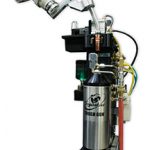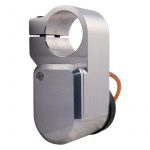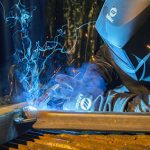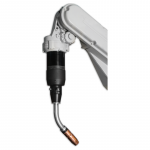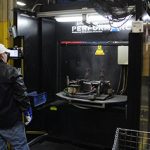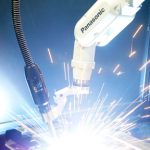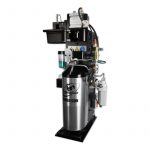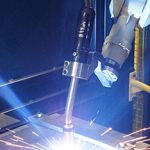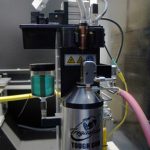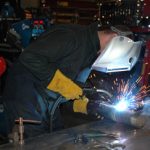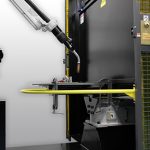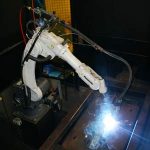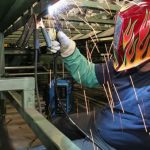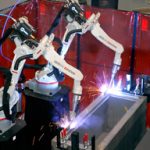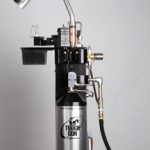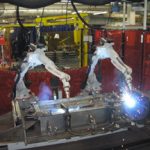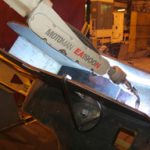Getting the Most Out of Peripherals
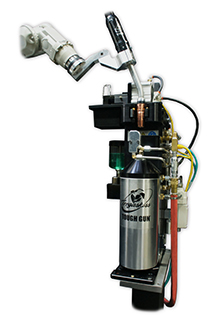
Peripherals — equipment that is integrated into the robotic welding process to make it more effective — can significantly boost the return on investment you achieve from your welding robot. And incorporating and operating peripherals successfully doesn’t have to be difficult. To help, it is important to understand how your peripherals are intended to function and employ some best practices for using them.
Clutches
All robotic welding systems require some form of collision detection to prevent damage to both the robotic MIG gun and the robot arm in the event of an impact. Impacts can occur when the robotic MIG gun collides with an incorrectly positioned work piece or out-of-position tooling, or when the gun strikes an item that has inadvertently been left in the welding cell.
Some robotic systems incorporate robot collision detection software. Systems that do not have built-in collision detection, however, should always be paired with a clutch — an electronic component that attaches to the robotic MIG gun to protect it and the robot from heavy damage in the event of a collision. In some cases, you may choose to add a clutch to a system that utilizes collision software as backup protection for the robot.
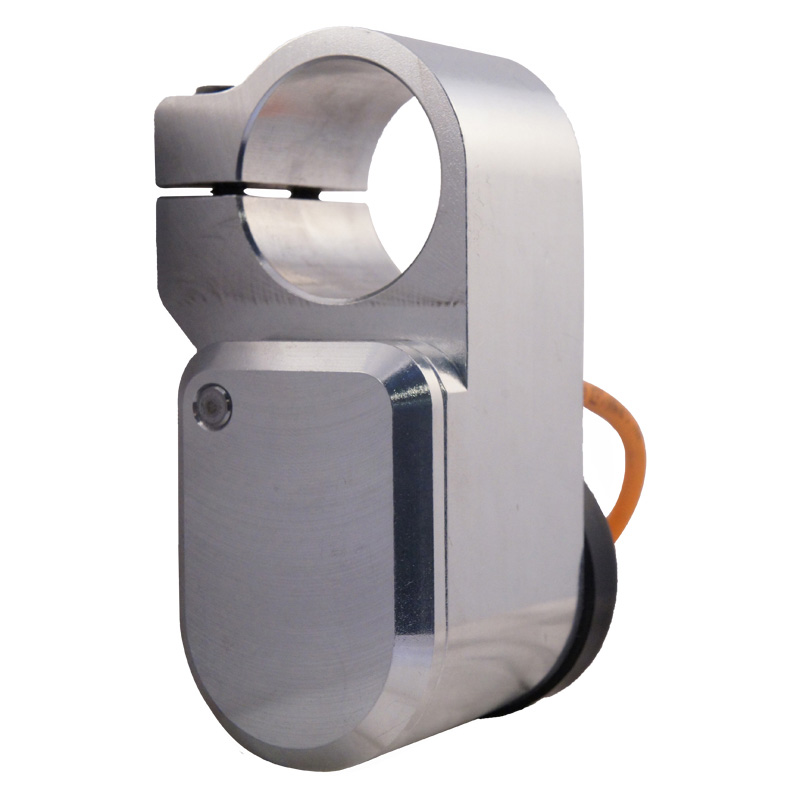
Always make sure the clutch works with the weight of the load created by the robotic MIG gun and front-end consumables. If the gun is not properly supported and the robot moves rapidly to another spot on the other side of the part, the extra weight can move the clutch out of its optimal position.
If a clutch gets triggered from a collision, reset it by pulling it towards you and letting it snap back into position. After, be sure to check your tool center point (TCP) to ensure the robotic MIG gun is properly aligned for precise welding of the joint. If it is off center, validate that the clutch is in its home position.
Wire cutters
If you have robotic welding applications that require consistent welding wire stick-out — the distance the wire extends from the end of the contact tip — a wire cutter is a recommended peripheral. As the name implies, a wire cutter cuts the welding wire to a specified length or stick-out and also removes any balling at the end of the wire.
Most wire cutters can cut a range of different types of welding wire, including stainless steel, flux-cored and metal-cored, usually up to 1/16-inch diameter. They can often be mounted on a nozzle station or used remotely as needed.
In conjunction with a wire brake, the wire cutter can ensure that the stick-out remains consistent for robots with touch sensing capabilities that help locate the joint.
Neck inspection fixtures
Another key peripheral is a neck inspection fixture, which tests the tolerance of a robotic MIG gun’s neck to the TCP so you can re-adjust it after an impact or after bending due to routine welding.
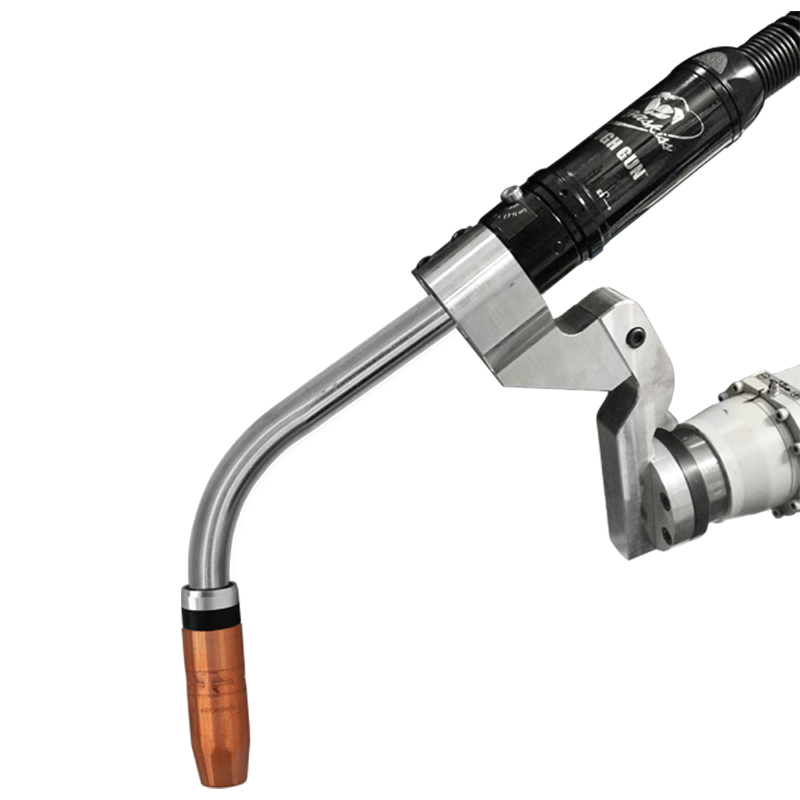
The advantage of adding a neck inspection fixture to a robotic weld cell is twofold. One, it ensures the neck meets the specifications to which the robotic welding system has been programmed and, once the tolerance has been determined, you can simply adjust the neck accordingly. This can prevent costly rework due to missed weld joints and can also prevent downtime required to reprogram a robot to meet welding specifications with an existing bent neck. Second, a neck inspection fixture can save you time, money and confusion when exchanging necks from one robotic MIG gun to another. Having this ability is especially advantageous if you maintain a large number of welding robots. You can simply remove a bent neck and change it with a spare that has already been inspected and adjusted, and put the robot back in service immediately.
Nozzle cleaning stations and sprayers
One of the most important peripherals you should consider for your robotic welding system is a nozzle cleaning station or reamer. A nozzle cleaning station removes spatter from the robotic MIG gun nozzle and clears away the debris that accumulates in the diffuser during the welding process. This helps lengthen the life of the robotic gun consumables, as well as the gun itself. A clean nozzle also reduces problems that could lead to rework and helps the robot create better quality welds.
During installation, be sure your reamer is on a sturdy base or otherwise securely fastened and not moving around during the reaming cycle. Ideally, the nozzle cleaning station should be placed in close proximity to the welding robot so it is easily accessible when cleaning is necessary. You should program the reaming process to run in between cycles — either during part loading or tooling transfer — so it does not add to the overall cycle time per part.
Always keep the covers on your reamer. The electronics within a reamer can be easily ruined by moisture from the atmosphere. Also, remember to use clean, filtered and lubricated air in your reamer. If “dirty” air goes into the reamer, it will clog up the valves. If you don’t have a lubricator installed on the reamer, use an alternative method to lubricate the air that goes through the motor.
It is important that your reamer matches the diameter of the nozzle and that the blade does not hit the diffuser or nozzle when it goes through a ream cycle. Be sure you are using the right blade for the nozzle you have and that your nozzle is set at the correct depth within the jaws of the reamer.
A reamer can be used by itself or in conjunction with a sprayer that applies an anti-spatter compound to protect the nozzle, diffuser and work piece from spatter. Make sure the nozzle is the correct height away from the spray block and that the duration of the spray is about a half a second. Too much anti-spatter compound can ruin the insulator on your nozzle, and can lead to unnecessary costs for replacement. The compound may also build up on the nozzle, the robot and the parts being welded, resulting in additional cleanup.
Frequently check that the sprayer and sprayer head is free of debris; if spatter gets inside the sprayer head, it will cause the spray plume to be distorted, which will create inconsistent coverage.
If you are using a multi-feed anti-spatter system, be sure you have a good quality hose, such as a urethane hose, and that it is protected from any spatter that may hit it and create a hole. Also, securely fasten the hose with clamps at every connection to prevent leaks.
You may consider using a spray containment unit to capture excess anti-spatter compound. If so, weekly inspections are recommended; remove any spatter or debris that may have fallen to the bottom. Failing to do so can prevent the unit from draining, which will cause the containment unit to overflow and create a mess.
No peripheral decision
The decision to invest in robotic welding equipment is significant. It requires time, knowledge and a trusted relationship with a robotic welding equipment manufacturer to find the right system. The same holds true for peripherals.
Although these devices do add to the initial cost of automating, they can lead to measurable cost savings and profits in the long run. But remember, the goal in robotic welding is repeatability and increased productivity, and any additional equipment that can help achieve these results may be worth your investment.
Implementing and operating a robotic welding system requires attention to detail to gain high productivity and consistent quality. It’s equally important to do whatever you can to protect your investment for the long term — from the robot to the MIG gun and more. In some cases, robotic peripherals are an additional means to help and can provide added safety, in the case of a clutch. As a safety device for your robotic MIG gun, a clutch attaches to the robotic MIG gun and protects it — and the robot arm — from damage. If the robot crashes, the clutch will send a signal back to the robot that alerts it to shut down. Not only does this help prevent further damage to the robotic arm, but it also protects your gun and your front-end consumables. While many newer robots are equipped with collision detection software that serves the same function as a clutch, older robots, which are still very commonly used, are not. Regardless of whether you’re operating a new or older robot, everyone knows your robotic welding system is only as good as the uptime it offers. It’s essential to keep as much arc-on time as possible. When selecting a clutch, you need to choose one that can hold whatever load is going to be on it. For example, if the front end of the gun is extremely heavy and requires significant air movement, some clutches may not be able to support it or may require an adjustment to their sensitivity settings. Also, look for obvious size constraints and make sure the clutch fits within your molding application and tooling. When setting up your clutch be sure to check your tool center point (TCP). Putting on a clutch should not significantly change the TCP. If it’s off, be sure to validate that the clutch is in its home position. Also, when replacing a clutch, make sure the TCP is within specifications. Similarly, always reset the clutch to its home position and recheck the tool center point after a crash. If the tool center point is off, look first to make sure no other damage occurred to another component during the crash. It could indicate that the neck bent out of position, for example, and needs to be straightened with a neck checking fixture or replaced. If all components are undamaged and the deflection is still off, you’ll need to trip the clutch again by pulling it back and snapping it back into place. Typically, the only reason a clutch will fail is if its electrical switch inside fails. If that happens, it will no longer send a signal back to the robot, which will shut down the entire system. In order to ensure the switch is working properly, you can either conduct a continuity check in the open and closed position of the switch using a multimeter or manually trip it by bumping the neck with your hand. If the clutch is working properly, it will send a signal back to the robot that indicates there is a problem. This type of check can be done as part of your preventative maintenance whenever the robot is set up and in a stopped position. Remember, as with any part of the robotic welding system, knowledge is key. Peripherals like clutches serve a distinct purpose in helping make robotic welding successful. Keep in mind some of these tips to help you get the most out of this equipment. Want to improve your MIG welding? By following these seven tips, you can take your MIG welding operation to the next level and ensure you are as safe, efficient and professional as any other shop. Never forget that welding, when done improperly, can be hazardous. Electric shock, fumes and gases, arc rays, hot parts, noise and a host of other possible hazards come along with the territory. The ultraviolet and infrared light rays can also burn your skin — similar to a sunburn but without the subsequent tan — and your eyes. This is why the best MIG welding operator knows how to stay safe. Welding helmets, gloves, close-toed shoes and clothes that fully cover exposed skin are essential. Make sure you wear flame-resistant natural fibers such as denim and leather, and avoid synthetic materials that will melt when struck by spatter, potentially causing burns. Also, avoid wearing pants with cuffs or shirts with pockets, as these can catch sparks and lead to injuries. Keep in mind that heavy-duty MIG welding often produces a lot of heat, sparks and spatter, and requires a lower degree of dexterity than some other forms of welding. Therefore, using thick, stiff leather gloves that provide a higher level of protection is smart. Similarly, choose leather footwear that covers your entire foot and leaves as little room as possible for spatter to fall along your ankle line. High-top leather shoes and work boots often provide the best protection. Finally, always be sure you have adequate ventilation per OSHA recommendations and check material safety data sheets (MSDS) for each metal being welded and filler metal being used. Use a respirator whenever required by the MSDS. Before you get started, conduct online research to see what the best practices are for the specific wire you have or contact a trusted filler metal manufacturer. Doing so not only tells you what the manufacturer’s recommended parameters are for your diameter wire, but also what the proper wire feed speed, amperage and voltage is, along with the most compatible shielding gas. The manufacturer will even tell you what electrode extension or contact-to-work distance (CTWD) is best suited for the particular wire. Keep in mind that if you get too long of a stickout, your weld will be cold, which will drop your amperage and with it the joint penetration. As a general rule of thumb, since less wire stickout typically results in a more stable arc and better low-voltage penetration, the best wire stickout length is generally the shortest one allowable for the application. Before you start welding, make sure all of your connections are tight — from the front of the MIG gun to the power pin attaching it to the power source. Also be certain there is no spatter buildup on your consumables and that you have a ground cable as close to the workspace as possible. Whenever possible, hook the ground cable on the weldment. If that is not possible, hook it to a bench. But remember: The closer it is to the arc, the better. If you have a questionable ground, it can cause the gun to overheat, impacting contact tip life and weld quality. In addition, regularly clean any shavings from the welding wire or debris that collects on your consumable parts and in your liner using clean compressed air. Improper drive roll selection and tension setting can lead to poor wire feeding. Consider the size and type of wire being used and match it to the correct drive roll. Since flux-cored wire is softer, due to the flux inside and the tubular design, it requires a knurled drive roll that has teeth to grab the wire and to help push it through. However, knurled drive rolls should not be used with solid wire because the teeth will cause shavings to break off the wire, leading to clogs in the liner that create resistance as the wire feeds. In this case, use V-grove or U-groove drive rolls instead. Set the proper drive roll tension by releasing the drive rolls. Then increase the tension while feeding the wire into your gloved hand until the tension is one half-turn past wire slippage. Always keep the gun as straight as possible to avoid kinking in the cable that could lead to poor wire feeding. Contact tips can have a significant impact on MIG welding performance since this consumable is responsible for transferring the welding current to the wire as it passes through the bore, creating the arc. The position of the contact tip within the nozzle, referred to as the contact tip recess, is just as important. The correct contact recess position can reduce excessive spatter, porosity, insufficient penetration, and burn-through or warping on thinner materials. While the ideal contact tip recess position varies according to the application, a general rule of thumb is that as the current increases, the recess should also increase. See Figure 1. Always know what gas your wire requires — whether it’s 100 percent CO2 or argon, or a mix of the two. While CO2 is considerably cheaper than argon and good for penetrating welds on steel, it also tends to run cooler, making it usable for thinner materials. Use a 75 percent argon/25 percent CO2 gas mix for even greater penetration and a cleaner weld, since it generates less spatter than straight CO2. Here are some suggestions for shielding gases for common types of wire: Solid Carbon Steel Wire: Solid carbon steel wire must be used with CO2 shielding gas or a 75 percent CO2/25 percent argon mix, which is best used indoors with no wind for auto body, manufacturing and fabrication applications. Aluminum Wire: Argon shielding gas must be used with aluminum wire, which is ideal for stronger welds and easier feeding. Stainless Steel Wire: Stainless steel wire works well with a tri-mix of helium, argon and CO2. For the best control of your weld bead, keep the wire directed at the leading edge of the weld pool. When welding out of position (vertical, horizontal or overhead welding), keep the weld pool small for best weld bead control, and use the smallest wire diameter size you can. A bead that is too tall and skinny indicates a lack of heat into the weld joint or too fast of travel speed. Conversely, if the bead is flat and wide, the weld parameters are too hot or you are welding too slowly. Ideally, the weld should have a slight crown that just touches the metal around it. Keep in mind that a push technique preheats the metal, which means this is best used with thinner metals like aluminum. On the other hand, if you pull solid wire, it flattens the weld out and puts a lot of heat into the metal. Finally, always store and handle your filler metals properly. Keep product in a dry, clean place — moisture can damage wire and lead to costly weld defects, such as hydrogen-induced cracking. Also, always use gloves when handling wires to prevent moisture or dirt from your hands settling on the surface. When not in use, protect spools of wire by covering them on the wire feeder, or better yet, remove the spool and place it in a clean plastic bag, closing it securely. As with any welding process, it takes time and practice to gain the best performance when MIG welding. Following some of these simple steps can help along the way.
Companies invest in robotic welding systems to improve productivity, gain more consistent weld quality and reduce costs. Robotic welding can also set companies apart from the competition by allowing for faster completion and delivery of products. Because of the cost for investing in this equipment, it is important to take steps to protect the system and ensure it is operating at its maximum potential. Keep in mind these best practices and troubleshooting tips to help you avoid downtime and increase throughput in your operation.
Welding automation offers numerous benefits for companies of all sizes — from improved productivity and weld consistency to lower costs for production, labor and materials.When implemented correctly, robotic welding systems also help companies gain a competitive advantage over those that have not made the transition to this technology. More than ever, smaller shops are beginning to make the investment in automation and realizing positive results. There are, however, various considerations to make before adding a robotic welding system to the shop floor. Selecting the right system, assessing the available facility space and training welding operators properly are just a few factors that can help companies gain the best efficiencies and the best payback. Robotic welding systems offer consistency and repeatability that can lead to significant improvements in productivity and finished part quality. That better quality also helps reduce the time and money spent on rework. In addition, these systems can lower production costs by reducing waste and labor requirements. For example, a robot has the ability to lay down the same amount of weld metal each pass with limited supervision, eliminating the issue of over-welding and the associated filler metal waste and cost. Such benefits translate to many applications in both large and small shops. Yet the investment in even one robotic cell in a smaller shop may result in welding automation taking over a higher percentage of the total welding output, for a potentially greater return on investment (ROI). Likewise, while larger companies may have more resources to draw on when adding welding automation, smaller shops can potentially gain greater flexibility while adding automation. In some cases, the owner may frequently be on the shop floor, and employees may wear multiple hats. The outcome is a collaboration that can result in greater employee buy-in on the purchase and an innovative approach to gaining the best efficiencies. Still, a good rule of thumb for any shop considering robotic welding — small ones included — is to fully evaluate the welding operation and parts before making the purchase. When considering welding automation, shops should ask the question “What are our pains?” By identifying goals before starting the process, the company can determine if welding automation is indeed the right solution. Those goals may include improved throughput, increased welding quality or simplified training for welding operators. Once a company identifies the challenges and goals, considering the following can help: Knowing the benefits robotic welding can provide in a specific shop can offer a better understanding of what the ROI expectations are. ROI estimates should consider the labor rate of each shop and how much time welding automation might save, as well as the ratio of machine uptime to downtime for part and fixture changeover. Some shops may have a single part with enough volume to justify a robotic system. In other shops, it may be necessary to combine multiple parts to get the needed volume for ROI purposes. In those cases, grouping by family of parts (like parts of different sizes, for example), can help improve efficiency and save on downtime for fixture changeover. The robotic welding solution needed for a specific company may require a weld cell that is larger than the area available. The need to expand or modify the space to accommodate a welding automation solution adds to the costs and can greatly impact ROI, so it’s an important consideration to keep in mind. While parts don’t need to be perfect, they do need to be repeatable. If there is a gap in a part, it needs to be a repeatable gap so that it can be welded by the system the same way each time. When there is too much variability in the parts, it can lead to more downtime for adjustment or rework. The workflow for robotic welding will likely be quite different than the workflow for semi-automatic orders, which can be changed more easily and produced in smaller batches. A robotic system typically produces three to five times the number of parts in the same amount of time and requires the throughput to be more consistent throughout the entire process. This is one of the most important factors to operate a successful robotic welding operation — especially for first-time users and smaller shops where technicians may not be in-house. Unfortunately, it is also often one of the most overlooked factors. The initial training on a robotic welding system is critical, and many welding manufacturers offer on-site training to help with installation, basic programming and user training. This training can help prevent common issues that keep the system from functioning properly, such as incorrect liner and/or gun installation. It is also important to conduct ongoing training. The features and functions of robotic welding cells can change, so it’s important to remain up to date on them to make the most out of the investment. There are technologies and solutions available that make it easier and more feasible for smaller shops to add welding automation. Pre-wired and pre-assembled robotic weld cells are one such example. In fact, some preconfigured systems can be up and running within a matter of hours. Offline programming can also provide benefits for companies. It allows shops to program parts and design fixtures before the welding actually takes place in the weld cell. This feature offers the ability to remove any mistakes before material is cut for fixtures and can reduce machine downtime for setup. The result is greater uptime and throughput that is consistently high. Several options in robotic MIG gun technology and peripherals can also help increase productivity and reduce downtime for consumable changeover, further increasing the ROI for smaller shops. A robotic cleaning station (or reamer), for example, removes spatter from front-end consumables without the welding operator entering the cell. This spatter removal helps consumables last longer and reduces downtime for maintenance. Front-loading liner systems available for some robotic welding guns are also designed to minimize downtime and reduce issues with wire feeding. Proper installation of the liner is critical to its ability to guide the wire through the power cable and up to the contact tip. Improper liner installation, which includes trimming the liner too short or having a liner that is too long, can lead to a number of issues, including birdnesting, poor wire feeding and debris in the liner. Front-loading liner technology can save significant time in changeover, by allowing operators to easily change the liner at the front of the gun without removing the gun from the robotic system. Some front-loading liners also have a spring-loaded module to accommodate for up to 1 inch of forgiveness for improperly trimmed liners. Increasingly, the positive impact of welding automation is helping smaller shops become more competitive. To gain the benefit of improved quality and productivity, and to reduce costs, companies should always plan out their robot purchase and implementation carefully. A trusted equipment manufacturer is a good resource to help.
Robotic welding systems can provide many companies with increased productivity, improved quality and reduced costs — important and differentiating benefits in the fabrication and manufacturing world. However, simply implementing a robot or two isn’t enough to maximize such benefits. Organizations must understand where they should focus their resources to achieve the most gain. To help remain competitive, companies need continually to look for ways to increase throughput in their overall robotic welding process, while also keeping costs low and quality on par. But given the demographic changes taking place throughout the welding industry — many companies are seeing more turnover in management as longtime supervisors retire and new leaders join the ranks — some managers may not have as much experience with robotic welding systems. Determining how to keep the welding operation functioning in the most efficient, productive and profitable manner may become an intimidating task. This article discusses four key strategies to help welding managers, particularly those new to the job, maximize throughput in robotic welding applications. One of the first steps in improving throughput in robotic welding applications is streamlining in-house processes from beginning to end, to minimize the number of non-value-added activities. Streamlining begins with establishing a clear understanding of the entire production process as it currently functions. Issues to consider include: how long it takes to make a part; how long it takes for a part to go through the entire system; how many machines run at once; how many machines run at full capacity; floor space utilization; how often the part is handled; and proximity of components to the process areas. Gathering this kind of data is helpful in establishing baselines. Once there is an understanding of the entire process, welding managers can start looking for areas to improve. Many of the variable costs in manufacturing come from the process of actually putting products together, so reducing or eliminating non-value-added activities in this part of the process can help to reduce costs. Understanding how much time it takes for a component to move through the entire production process also can reduce the volume of inventory waiting to be processed, which saves costly space. It may also minimize some of the labor used to manage inventory, allowing it to be dedicated elsewhere in the welding operation to help improve the process. Another way to become more efficient in robotic welding processes is to seek out other manufacturers or industry experts who have had success in this area. Find another manufacturer that produces similar products (but is not a competitor) and observe their facilities and production processes. Look for these opportunities with companies known for strength in efficient fabrication or manufacturing, and ones that are gaining success in their robotic welding applications. In short, finding resources that are comparable and appropriate can help with the process of benchmarking areas for improvement. Managers also can capitalize on relationships with industry colleagues and connect with other experts via professional organizations and societies. These networking opportunities can offer good resources for industry knowledge and best practices that can then be applied within the robotic welding process. Managers may also find it useful to seek advice on best practices from the manufacturer or the integrator of the robotic welding system or products (such as robotic MIG guns, consumables or peripherals). These sources often have information to provide about integrating the products with existing equipment or investments that can be made to improve throughput. Another important step for increasing throughput in robotic welding processes is understanding what the key cost drivers are. Understanding the fixed costs and the variable costs in each step of the process enables managers to identify the key cost drivers in the complete production process. Once they have identified and measured the key cost drivers, managers can use that information to decide where to focus attention for improvement efforts to get the biggest impact. This approach can help companies become more efficient and effective operations. Some of the questions to consider when conducting a detailed analysis of cost drivers in manufacturing and fabrication include: how much it costs to produce a part; the time required to perform an activity; how much it costs for equipment maintenance; and how much it costs in lost productivity if equipment is not functioning properly. A detailed analysis of cost drivers also can help a company identify non-value-added activities, such as grinding, cleanup and part movement, and how much time is spent on those activities. This analysis is another step in deciding where improvements can be made to make the most impact on throughput. The purpose of a detailed analysis that looks at time and costs is to clarify and measure cost drivers, with the aim of developing a strategy to improve productivity. Companies can spend a lot of time and effort to measure costs and processes, and develop solutions to improve efficiencies, but may overlook the next key steps: actually following through with the improvement plans and then measuring those accomplishments. Managers may think of improving throughput as an event, when really it’s a process. Hatching good ideas and formulating solutions is important, but implementing those plans and then revisiting them for periodic review is just as important. The bottom line is managers should ask, “Are we actually doing what we said we would do, and is it working?” Implementation is most effective when it happens as a collaborative effort, rather than as a top-down mandate from management. Involve employees from the plant floor up through company management when formulating initiatives. This kind of widespread involvement and buy-in is necessary for continuous improvement and for change to successfully occur. After collaborative implementation, it’s important to follow up with an effective way to easily measure the efforts. An effective measurement strategy helps verify if the implemented processes are paying off. Following a “plan-do-check-act” model of continuous improvement can help manufacturing and fabrication facilities improve throughput in robotic welding applications.
Robotic welding systems provide speed, accuracy and repeatability in many fabrication and manufacturing applications — features that can increase productivity and consistency, and reduce rework. The opportunity for savings due to these quality and efficiency improvements is a primary reason many companies make the investment in automation. There is also an increasing shortage of skilled welders entering the workforce, which makes welding automation an appealing option. However, it takes more than just installing the system to have a profitable automated welding operation. Neglecting other important steps in the process — preventive maintenance, operator training and the use of complementary equipment called peripherals, for example — can result in a robotic welding system that is not performing as well as it should. A less efficient process can lead to more expenses via rework and downtime in the long run, since a robotic welding system is only as strong as its weakest link. This article discusses some common myths about robotic welding systems that can keep a company from fully maximizing the return on investment in this technology, and provides advice to address those misconceptions.
Whether it’s in a small fabrication shop or a large manufacturing facility, investing in a robotic welding system is no minor expense. In many cases, the welding assigned to a robotic cell could also be performed in a semi-automatic or manual welding cell. However, it’s the potential advantages of the system — greater productivity, higher quality, better consistency and more cost savings — that make the purchase of a robotic welding system such an attractive option. Obtaining those results isn’t a matter of chance. At the end of the day, the robotic system needs to be able to produce more parts at an equal or higher quality and accuracy than a human operator. It’s the job of the robotic welding supervisor to make sure that happens. To achieve success in a robotic welding application, there are several key factors a robotic welding supervisor — especially one new to the task — must consider. Specifically, he or she must be able to understand the robotic system thoroughly, establish an effective documentation and maintenance routine, and look for ways to improve performance on an ongoing basis. In many cases, that may also mean enlisting the expertise of resources both inside and outside the company. Understanding the robotic system might seem like an obvious requirement for a robotic welding supervisor. With all of the administrative and operational duties that often accompany the role, however, it can be easy to simply delegate portions of the daily operation of the robotic welding system to shop floor personnel and/or the maintenance staff instead. That tendency, unfortunately, could lead to pitfalls by distancing the robotic welding supervisor from the ins and outs of the robotic welding operation. For example, the robotic welding supervisor doesn’t necessarily need to be able to troubleshoot a circuit board malfunction or rewrite the welding program, but it’s important that this individual has a solid knowledge about these components, so if an issue arises he or she can quickly recognize that there is a problem and alert the appropriate personnel to rectify it. The robotic welding supervisor should also know how the components in a robotic welding system — the robotic GMAW (gas metal arc welding) gun, consumables and cables, to mention a few — relate to each other and the impact they have on weld quality and productivity. Again, having this knowledge makes it easier to identify a potential problem and seek out the best solution. Gaining robotic welding success depends in part on establishing a rigorous documentation, maintenance and control system. When problems arise, as they undoubtedly will, they never occur without a cause. The best way to start the troubleshooting process is to look back to the last thing that was changed in the welding process — or should have been changed, but was not. Keeping an accurate and detailed log of everyone who enters the robotic welding cell is key. There should be documentation of everything personnel cleaned, changed or replaced in the cell, including adding new contact tips or other consumables, changing drive rolls or transferring a new drum of wire into the robotic weld cell. This record can help in identifying the source of a problem and getting the system back up and running with as little downtime as possible. Without such documentation, maintenance personnel could spend hours looking for the source of the issue, when in reality, they may only need a few minutes to rectify the situation. Keeping a log of activities within the robotic welding cell will also assist the supervisor in establishing an effective predictive maintenance schedule, which is the best way to keep unexpected downtime occurrences to a minimum. An activity log can help predict when a gun cable liner will fail, for example, so that maintenance personnel can prevent unplanned downtime and quality problems by changing the liner beforehand. Keeping traffic in and out of the robotic welding cell to a minimum is also important to reducing change within the operation and keeping documentation accurate. The more people coming and going from the cell, the more difficult it becomes to monitor and record activities that could affect the performance of the robot. Getting the robotic system running at peak capacity and providing an acceptable return on investment is just the beginning of establishing an effective robotic welding operation. From there, the robotic welding supervisor should look for ways to optimize and improve the robotic welding operation on a continual basis. A robotic welding cell might be running well enough to meet its daily production demands, but finding ways to improve its performance even more can bring significant advantages to a company. For example, creating greater efficiencies within the system can free up extra capacity that could be used to produce a product from somewhere else in the shop. Also, it’s important not to settle for “good enough” in the robotic welding operations. Accepting suboptimal circumstances — for instance, that a robotic GMAW gun cable is rubbing on the robot arm and must be replaced every two months or that every two hours the operator must adjust welding parameters to accommodate consumable wear — can hinder the efficiencies sought in automation in the first place. A robotic welding supervisor should never consider these types of activities as inherent to the production process, but rather seek out ways to rectify them in the name of continuous improvement. After all, a company that continues investing in robotic welding — compared to one who simply accepts and compensates for problems — stands a greater chance of gainining higher productivity and profitability, not to mention a competitive edge. To achieve the goal of continual improvement and optimization of the robotic welding operation, the supervisor should also know the resources available to him or her, both internally and externally. Internally, everyone from the daily robot operator and the quality technician to the engineering staff and the sales team should be communicating with each other to help improve the existing robotic system. These team members can also play a vital role in helping identify the company’s future robotic welding needs. The daily robot operators — those who load and unload parts and interact with the tooling — often know the specific robot and its idiosyncrasies better than anyone on the shop floor. As a result, they are often in the best position to alert the robotic welding supervisor about potential or existing problems. They may, for instance, notice that certain joint configurations or positions tend to result in excessive spatter, resulting in unnecessary post-weld clean up. By maintaining open communication with these individuals, the robotic welding supervisor can then employ the proper resources to rectify the problem. Quality technicians can be another source of valuable information to help the robotic welding supervisor improve the performance of the operation. Quality technicians might notice that welds in a certain area of a part are regularly oversized. The supervisor can then take this information to engineering, which in turn can look for solutions to revise the weld sequence or identify different system components that could further improve productivity and cost savings for the robotic welding system. Alternatively, an external resource, such as a robotic welding integrator or equipment manufacturer, can often offer insight and expertise gleaned from working with the robotic welding operations at other manufacturers. This knowledge can help companies to not only address issues within the robotic welding system, but it can also put these individuals in a position to offer advice that will make the operation run more efficiently. In this respect, the robotic welding supervisor should take the role of a communicator. He or she will be the one who understands and gathers the information from the resources available, as well as facilitating the conversations necessary to improve and optimize the robotic welding operation. Being responsible for the bottom line success of a robotic welding operation can be a daunting task. It requires a breadth of technical and business experience as well as strong people skills. Plus, as technology continually improves and evolves, the robotic welding supervisor must keep focused on improvement and optimization. They must also maintain open communication with resources both inside and outside of the facility. For those up to the challenge, however, the potential for a robotic welding system to improve quality, productivity and a company’s ultimate success is immeasurable. Worldwide, companies serving the automotive industry have faced a unique set of challenges in the last several years, including changes in material types, a lack of skilled labor and initiatives by OEMs to decrease the weight of vehicles. Still, as the economy continues to rebound, each must find ways to maintain their productivity and profitability — often with fewer employees than before the recent recession. A large part of maintaining that productivity is to ensure high levels of uptime in the robotic welding operations in order to maximize net throughput. It is equally important to find ways to minimize errors and obtain predictive weld data to help anticipate problems in the operation. Conventional issues like spatter, burn-through and poor part fit-up often hinder these attempts, as can the need to manage large amounts of inventory and contend with downtime to service welding equipment. That’s why it’s so important, too, for companies to find equipment that minimizes the total cost of ownership. Unfortunately, there is no single answer to these challenges. There are, however, some considerations that may help reduce automotive suppliers’ pains and assist in other interrelated parts of the process. Best practice meetings: When possible, suppliers in the automotive industry should work with original equipment manufacturers (OEMs) and vendors or welding distributors who can engage regularly in best practice meetings. These meetings can occur by conference call, webinar or in person, and can help determine what practices in the welding operation are working most effectively and what areas need improvement. “Open issues” can be prioritized in order to determine time-phased solutions. These meetings can be especially helpful to companies with multiple locations (even globally), since they help identify opportunities for changes that could positively affect other facilities. They are also an excellent platform for brainstorming error-proofing ideas and serve to open communication among the parties involved in the success of a company’s welding operation. Ultimately, the goal is to spread an assessment of the operation to a broader peer group, extending the company’s core competencies to gain solutions from others’ input. Streamline vendors: Automotive suppliers, particularly those with multiple locations, may want to consider purchasing their robotic gas metal arc welding (GMAW) guns, peripherals, consumables and other welding supplies from a single-source vendor via a welding distributor. Having multiple vendors may appear to provide cost savings on the surface; however, a per-item approach can actually increase the total spend. Instead, by single sourcing a product line, a company is better poised to maximize their purchasing power with one vendor and gain loyalty discounts. The vendor may also be more inclined to aid in new efficiencies and groundbreaking technologies. Plus, a trusted single-source vendor can often help automotive suppliers assess their total weld spend, streamline inventory and reduce costly paperwork. The goal is to work with a vendor who can “own the arc,” providing assistance throughout the whole welding operation by assessing predictive data and offering suggestions for ongoing improvements. “Co-opetition”: If you already work with several welding vendors, co-opetition is your next best option to maintaining an effective welding operation and in some cases can occur as part of best practice meetings. This term refers, in short, to cooperation that occurs between the various equipment manufacturers who are building the end user’s welding solution. Sometimes these companies have competitive product overlap. For example, the manufacturer of the robotic GMAW gun or welding wire may be in direct competition with the company whose power sources are in an automotive supplier’s weld cell. Even so, finding equipment manufacturers who are willing to work together to address problems in the welding operation is key to resolving issues when they arise. A problem with the contact tip, for example, is usually a barometer of other things happening in the process. In short, it is very often a symptom of a problem, as opposed to the root cause. Having partners who are willing to put aside competitive differences for the good of resolving problems like these is important to gaining good welding performance. If this co-opetition is not feasible, companies may want to consider moving to a single-source vendor. Equipment standardization: Recent increases in demand for production have caused some automotive suppliers, especially those in North America, to make capital investments that they previously postponed during the recession. When possible, standardizing on a single brand and style of welding power source, robotic controller, and GMAW gun and consumables during this investment can streamline inventory and maintenance procedures, thereby lowering management costs. It can also help companies avoid long lead times associated with specialty products and improve access to spare parts. For companies in an organic growth mode with new programs and/or greenfield operations, this standardization can help in long-term equipment re-deployment to other facilities, as well as streamline the learning curve among employees, and improve adoption rates and costs. For companies that are in acquisition mode, however, this standardization may not be feasible. Instead, these suppliers should, at a minimum, consider standardizing on a single brand and style of robotic GMAW guns and consumables to minimize inventory. Doing so can also reduce the risk of improper consumable installation, which often leads to unscheduled downtime to rectify. Appropriate welding technology: Many automotive suppliers rely on tandem- welding operations as a means to generate greater productivity. Companies can use this process for line production in the cells housing the majority of the welds. The benefit is that these operations require less floor space and can simultaneously improve throughput. Advancements in single arc pulsed technology have also proven very efficient in providing faster travel speeds and minimizing spatter. This single arc technology, which effectively lowers the average amperage level during welding (by regularly switching the current between high peak amperages and low background amperages), is also quite easy to operate. Given the reduction in workforce in the automotive industry, combined with an overall shortage of skilled labor, this less complex (but highly efficient) technology has already proven beneficial for many automotive suppliers. Companies should work with an appropriate welding distributor or robotic integrator to assess the individual application in order to determine the most appropriate welding technology. Error-proofing: In addition to standardizing equipment when possible, using welding products that minimize the opportunity for human errors is an important part of keeping the welding process flowing. For example, nozzle detection can eliminate the potential of excessive rework or scrap. Avoiding errors in equipment installation is also critical, as missing or incorrectly installed components on the front end of a robotic GMAW gun can cause it to become electrically alive, leading to premature failure and poor welding performance. Preventive maintenance: Even though preventive maintenance or PM may have become a commonplace buzzword in recent years, the fundamentals are still critical to providing good welding performance and reducing unscheduled downtime in the automotive industry. Companies should take care to inspect all connections in the ground cables, feeding assembly, wire feeder, GMAW gun and consumables on a regularly scheduled basis. Replacing worn components during scheduled downtime (at the beginning of a shift, for example) can help prevent problems during production. On some welding robots, “predictive maintenance” technology is available to send alerts when consumables need to be changed. Built-in buffers: As is typical in automotive “just-in-time” applications, suppliers want to reduce work in progress (WIP) — maintaining only strategically determined micro-inventories — and keep parts flowing (Takt time). To continue that workflow but still allow for any instances of stoppage in a robotic welding cell, suppliers may consider building a buffer into production. For example, if a company has a production line of 40 welding robots, breaking that line into fifths (five sections of eight robots), allows them to address any instances of failure while causing a stoppage of only eight robots instead of shutting down production on all 40. That buffer can mean a significant difference in terms of lost production and money. And while no single one of these considerations can ensure the levels of productivity and profitability to which automotive suppliers strive as production demands increase, they can be a step in the right direction. Automotive suppliers should consider working with a trusted welding equipment manufacturer and vendor to discuss a plan for assessing their robotic welding operation and identifying opportunities for improvement.
Robotic welding systems have become an increasingly practical way for companies, large and small, to gain a competitive edge. Assistance with everything from planning and implementation to training is readily available through robotic integrators or vendors, helping make the capital investment less risky and allowing companies to safeguard better results. In addition to programming the robot in a manner that ensures the accuracy, speed and repeatability needed to complete high-quality welds, there are also several steps that companies can take to increase the return on their investment. Saving money on the robotic welding systems is, after all, one of the primary reasons — apart from productivity gains and quality improvements — for implementing this technology. Minimizing downtime, reducing the need for parts replacements and preventing rework are among the more important cost-saving steps companies can make. Here are some ways to achieve those goals. Peripherals — reamers, wire cutters, neck inspection tools and clutches or solid mounts — are all additional equipment that can protect the robotic welding system investment, maximize its effectiveness and reduce costs. This equipment is particularly helpful in minimizing downtime that leads to offline maintenance or repairs of the equipment or its components (e.g., the robotic MIG gun, cables or consumables). Unfortunately, some companies view this equipment as an unnecessary cost and don’t realize that they can play an important role in improving quality and increasing productivity. Peripherals do, of course, require an up-front investment, but the payback period is relatively short. For example, a reamer (also called a nozzle cleaning station or spatter cleaner) minimizes spatter build-up in the nozzle and with it the opportunity for electrical resistance that could lead to premature failure of the robotic MIG gun or consumables. Failure of the gun or the consumable, of course, increases the cost for replacements and requires downtime for changeover — downtime that puts the robot offline and stops it from making parts … and making money. A clean nozzle also allows for good shielding gas flow, thereby minimizing quality issues that could be costly to repair. To protect consumables against costly damage before even placing them on the robotic MIG gun, it is important to employ proper storage and handling practices. Always keep consumables in their original packaging until they are ready for use. Opening the packaging and placing these components in a bin can lead to scratches or dents, both factors that allow spatter to adhere the product and can lead to premature failure. Similarly, removing contact tips or retaining heads from their packaging and storing them in open or dirty containers can cause dirt and/or oil to accumulate on them, which can lead them to seat improperly together. Regularly check that the contact tips, retaining heads and nozzles are securely connected. Solid connections help ensure reliable electrical conductivity and minimize heat, in turn providing more consistent weld quality and helping the consumables last longer. In addition, always follow the MIG consumable manufacturer’s suggestions for installing these consumables and use the proper tools in order to gain the best performance and reduce the risk of damaging them. While these two practices may seem simple, they can go a long way toward minimizing product replacements and preventing downtime that keeps the robot from reaching its optimal throughput during a shift. Both have measurable costs associated with them, as well, and can help companies save money. Preventive maintenance (PM) is another critical way to save money on robotic welding, primarily by preventing unscheduled downtime, poor quality parts and/or costly repairs. It can even help prevent failures that require equipment replacements. The robot, as well as the robotic MIG gun, consumables and cables can all benefit, too. Schedule time to check connections throughout the system (from the front-end consumables through the gun and power pin). This task can easily take place during routine pauses in welding cycles to prevent unplanned downtime. To prevent debris build-up that may affect part fit-up, also remember to clean fixturing on a regular basis. Similarly, check the front-end consumables for spatter build-up and replace as necessary. Verifying tool center point (TCP) is another important cost-saving measure, as it helps ensure that the robotic welding system continues to operate within its proper parameters and provide the same consistent weld quality — repeatedly. Certain maintenance can occur in between shifts, such as cleaning off the robot or changing consumables, for example. Other activities, such as greasing the robot’s joints usually occur less frequently and during a longer scheduled stop. Companies should assess their individual needs and plan the preventive maintenance schedule accordingly. For larger companies, hiring a maintenance crew to take care of preventive maintenance may be desirable. Reducing downtime for routine filler metal package changeovers can be one of the most effective ways of maximizing return on investment and productivity. Ideally, select a package that is large enough to minimize wire changeovers, but not so large that the same wire will remain on the shop floor for more than a couple of days. Filler metal manufacturers typically ship their products in airtight or hermetically sealed containers. Once opened, the wire is at risk of absorbing moisture, dust, oil or other contaminants that can affect its welding performance and ultimately cost money to replace, not to mention downtime to change over. It’s also important to consider the type of filler metal package being used. For instance, recyclable filler metal packaging can reduce costs and labor for properly separating and disposing of recyclable and non-recyclable packaging materials. When possible, stocking an extra filler metal package near the robot can also contribute to cost savings by reducing downtime to transport a new package from the storage area to the weld cell. To prevent problems like bird-nesting (a tangle of wire in the drive rolls) or poor wire feeding — both issues that lead to downtime and added costs — it is important to select the right MIG gun liner and install it properly. Always make sure to have the correct diameter liner for the wire being used. Using too large of a liner for too small of a wire may allow the wire to wander, causing poor wire feeding and/or premature liner failure due to excessive wear. Similarly, if a liner is too small for the wire diameter, the wire will not be able to feed smoothly, resulting in poor weld quality and potentially a clogged liner. Trimming the liner to the correct length is also a good cost-saving measure, since it helps prevent downtime and costs for replacing this part. Some manufacturers print markings on the outside of the weld cable to show when the cable is twisted, providing welding operators the opportunity to straighten it fully in order to measure for the correct liner length. Other manufacturers offer liner gauges as a guide. Both work well to guide in the correct trimming process. There are also spring-loaded modules available that work in conjunction with a front-loading liner to help minimize issues if a welding operator cuts the liner to an incorrect length. These modules are housed in the power pin and put forward pressure on the liner after the welding operator installs it from the front of the gun. They allow up to 1 inch of forgiveness if the liner is too short. Air-cooled robotic MIG guns (rated at 500 amps) operate comfortably in the range of 200 to 300 amps at approximately 60 percent duty cycle with mixed gases. They are good for welding thinner materials — typically upwards of 4 mm thick. The cost of ownership for these guns is usually relatively low since they are easier to maintain and replacement parts are less expensive than water-cooled guns. They work well for shorter welds on high-volume applications and are quite durable, especially through the neck. This durability further reduces costs because it helps the guns maintain their accuracy and create consistent welds. For higher-amperage applications, applications with thicker materials (1/4-inch or more) or those requiring prolonged welding, it’s necessary to have a gun capable of withstanding the increased heat. A water-cooled MIG gun offering 300 to 600 amps of power and 60 to 100 percent duty cycle is a good option to help reduce costs by preventing gun failure or downtime for overheating. These guns cost more to maintain, however, so it’s important to implement a good PM program for them to avoid any costly surprises. Hybrid robotic MIG guns are another option to help reduce costs, particularly when it comes to maintenance. These guns are a mix between an air-cooled and a water-cooled gun, and feature water lines that run independently of the power cable, making them more accessible to repair than on a standard water-cooled MIG gun. These guns can also remain on the robot for maintenance, too, which reduces downtime for removal. Plus, if there are issues with water circulation, these guns can rely on an underlying air-cooled unicable to provide enough current-carrying capacity to avoid a catastrophic failure such as destroying a power cable or other components. Many robotic integrators offer training opportunities not just up front, but also throughout the course of ownership of the robotic welding cell. Because robotic welding systems require properly trained operators to oversee them, it is important to make sure these individuals continue to gain knowledge that will increase their programming, troubleshooting and preventive maintenance knowledge and skills. In many cases, robotic integrators offer online tutorials, troubleshooting information and/or additional on-site training as aftercare support. By taking advantage of such opportunities, it will be easier for those who oversee the robotic welding cell to act quickly should a problem result and get the robot back online to product parts. It also empowers them to take preventive care to prevent downtime in the first place.
Consistent productivity, high quality and low costs are all key components in a successful welding operation. Gaining these advantages depends on everything from the equipment and filler metals to the skill of the welding operators and the techniques being used in the process. The shielding gas also plays a critical role. Both the gas metal arc welding (GMAW) process (using solid or metal-cored wires) and the gas-shielded flux-cored arc welding (FCAW) process require the use of an external shielding gas, each type of which offers distinct characteristics. Knowing how to select the appropriate one for the application can go far in helping obtain the desired welding performance and minimizing the downtime for rework caused by poor weld quality. To help, following are some basics of what you should know about shielding gases. The primary purpose of shielding gas is to protect the molten weld pool against elements in the atmosphere, including oxygen, nitrogen and hydrogen. The reaction of these elements with the weld pool can create a host of problems, including (but not limited to) porosity and excessive spatter. Shielding gas also plays an important role in determining weld penetration profiles, helping maintain arc stability and achieving the desired mechanical properties in the finished weld. Shielding gas can also affect the transfer of the filler metal from the arc to the weld joint, which in turns contributes to the efficiency of the welding process and the quality of the weld. Other important factors that shielding gas help determine include the weld bead appearance, and weld toughness and strength. The four most common shielding gases used in the welding process are carbon dioxide, argon, helium and oxygen. Each has specific characteristics and factors such as cost, available labor (i.e., for weld preparation) and the weld properties desired — all considerations when selecting which shielding gas is best for a given welding application. Carbon dioxide (CO2): This gas is the most common of the reactive gases used in the welding process and also the least expensive of the shielding gases. It is also the only one able to be used without the addition of an inert gas. One of the biggest advantages of pure CO2 is that it provides deep weld penetration, which is useful when welding thick material. It does, however, tend to create a less stable arc and more spatter than when it is mixed with other gases, including argon. This additional spatter can lead to downtime for post-weld cleaning. Pure CO2 is also limited to use in short circuit welding processes. Argon: When welding aluminum, magnesium or titanium, it is common to use 100 percent argon as a shielding gas due to its stable arc features. Adding argon to a CO2 shielding gas is also an option for materials like carbon steel. It provides consistent weld quality and appearance and good weld pool control, and can help minimize post-weld cleanup. Argon also produces a narrow penetration profile, making it useful for fillet and butt welds. Typical mixtures include a balance of 75 to 95 percent argon with 25 to 5 percent CO2. An argon/CO2 shielding gas mixture allows the use of a spray transfer process, which lends itself to high productivity rates and visually appealing welds. Helium: Helium is generally used when welding non-ferrous metals. It is also used in a tri-mix formula of argon and CO2 for welding stainless steels. The gas produces a wide, deep penetration profile, making it suitable for welding thick materials, and also creates a hot arc, which helps increase travel speeds and productivity rates. Helium is typically used in ratios of 25 to 75 percent helium with an appropriate balance of argon. Adjusting these ratios changes the weld penetration, bead profile and travel speeds. It’s important to note that helium is more expensive than other gases and requires a higher flow rate than argon (because it is so light). For this reason, it’s imperative that companies calculate the value of the productivity increase against the increased cost of this gas. Oxygen: Oxygen is a reactive gas typically used in ratios of 9 percent or less. The addition of the gas to a mixture with argon helps to improve weld pool fluidity, weld penetration and arc stability, particularly when welding carbon, low alloy and stainless steels. Because the gas causes oxidation of the weld metal, it is not recommended for use with aluminum, magnesium, copper or other exotic metals. To achieve the best results out of a chosen shielding gas, it’s important to select the proper front-end consumables. These consumables — the gas diffuser, contact tip and nozzle — play a critical role in delivering the shielding gas to the weld pool and also protecting it from the atmosphere. Consider these tips to help with the selection. 1. Choose consumables that have a smooth surface to help resist spatter build-up that could block shielding gas flow and lead to issues, such as porosity. 2. Choose an appropriate size nozzle for the application. A nozzle that is too narrow for the application can easily become clogged with spatter, again, hindering its ability to deliver enough shielding gas to the weld pool to protect it. 3. Consider using nozzles with a built-in spatter guard. These designs add a second phase of shielding gas diffusion, resulting in even smoother, more consistent shielding gas flow. 4. Be certain to select quality gas diffusers to ensure smooth and balanced gas flow. Consult with a trusted welding distributor for recommendations. Implementing a robotic welding system isn’t something that happens on a whim — at least not successfully. Converting to this technology can help companies gain greater productivity, improve quality and reduce costs in the welding operation, but the process requires thorough planning to gain those results. Working closely with a robotic integrator is a good step to ensure every aspect of the implementation is carefully orchestrated and that the robotic welding system works properly for the given application — in reality, not just theory. Before adding a robotic welding system, it’s helpful to know some key factors that can maximize the return on investment (ROI) in the technology and also help prevent potential problems. The quality of part produced by a robotic welding system depends on the quality of the part that enters the weld cell. That’s why it’s not uncommon to hear the phrase “garbage in, garbage out” when it comes to robotic welding systems — if the part entering the welding cell is flawed, the subsequent weld will be, too. To protect against poor weld quality, it is critical to have simple, consistent parts that allow the robot to execute the weld in the same location, repeatedly. Having a blueprint or electronic CAD drawing is helpful for confirming that repeatability. Robotic integrators can review the blueprint or they may want to create a software simulation that assesses the suitability of the part for the robotic welding system. After the assessment, they can advise of any adjustments that need to be made prior to implementation. Proper fixturing is also critical to achieving part repeatability, regardless of whether the application is high volume/low variety or low volume/high variety. Parts that meet the exact specifications can easily be welded incorrectly if they are not held in an exact position during the process. Many robot manufacturers offer vision systems to aid in part recognition and to ensure that the weld path can be altered in real time if part fit-up issues exist. These systems usually work very well, but may cost more. Robotic welding systems require a properly trained operator to oversee them. A skilled welding operator or an individual with previous robotic welding management experience is a good candidate for the job. Again, a trusted robotic integrator is an excellent resource to provide the necessary training, which should cover proper programming, troubleshooting and preventive maintenance. As a best practice, companies should also consider ongoing training support to keep the operator’s knowledge of the system up to date. In many cases, robotic OEMs offer online tutorials, troubleshooting information and/or additional on-site training as aftercare support. Many facilities already have fume extraction systems in place for manual welding operations, but converting to a robotic welding system may require additional equipment to help maintain a healthy work environment. With the increased production brought forth by a robotic welding system, there is also an increase in fume generation. Given the stringent regulations and recommendations from OSHA (Occupational Safety and Health Administration) and other safety regulatory bodies, proper equipment is necessary to maintain compliance. For larger facilities with higher production robotic welding applications, a centralized fume extraction system is a good option. These systems involve the installation of ductwork throughout the facility and the placement of fume extraction hoods over the welding cell. Smaller shops with fewer robotic welding cells may want to consider a less expensive portable fume extraction system. Operators can wheel these systems right next to the welding cell and adjust the extendable arm toward the robot to suction the fumes. It is also critical that the proper cage and screens are in place around the robotic welding system to protect employees from the welding arc and moving parts within the cell. Adding weld data monitoring capabilities and/or peripherals into a robotic welding system can help improve weld quality and productivity. Achieving these results, however, requires an additional up-front investment. Weld data monitoring (whether integrated in a power source or via a third party) allows companies to track the parameters of individual welds, determine the cause of weld defects and identify general inefficiencies in order to rectify those problems and optimize the process for peak quality and productivity. This equipment requires the purchase of software and computers, as well as the establishment and maintenance of an Ethernet network throughout the facility. Companies will also need tech-savvy individuals to review the data and make the necessary adjustments to the robotic welding system according to the data provided. Similarly, the addition of peripherals — particularly a nozzle cleaning station (also called a reamer or spatter cleaner) can improve weld quality and productivity. By cleaning spatter from the inside of the welding consumables on the front end of the GMAW welding gun, this peripheral helps extend consumable life, reduces downtime for changeover during production and also reduces the cost for replacing consumables. Nozzle cleaning stations also help minimize the loss of shielding gas coverage (due to spatter build-up) that could lead to poor weld quality and rework. Preventive maintenance of the entire robotic welding system, including the robotic GMAW (gas metal arc welding) gun, consumables and cables is an important step in protecting the investment in this technology. Neglecting maintenance can easily lead to unscheduled downtime, poor quality parts and/or costly repairs. It may even lead to failures that require equipment replacements. Scheduling time to check connections throughout the system, clean fixturing (to prevent debris that may affect part fit-up) and check TCP (tool center point) helps ensure that the robotic welding system continues to operate within its proper parameters. Certain maintenance can occur in between shifts — cleaning off the robot or changing consumables, for example — while other activities like greasing the robot’s joints may occur less frequently and during a longer scheduled stop. Companies need to assess their individual needs and plan the preventive maintenance schedule accordingly. For larger companies, hiring a maintenance crew to take care of preventive maintenance may be desirable. Retrofitting robotic welding systems is a common practice among many companies, particularly those investing in automation for the first time or for smaller shops requiring only one or two weld cells. It’s significantly less expensive to purchase a used robot than a new one. When retrofitting a robot, however, it is absolutely essential that it is capable of communicating with the selected power source if companies are to have the entire robotic welding system function properly. New power sources feature software that may not be immediately compatible with a robot that is older, or in some cases, the robot may need a specific robotic GMAW gun that isn’t readily available at a welding distributor or possibly even discontinued. For this reason, it is critical to contact an experienced robotic integrator who can both recommend and help set up all components in the retrofitted robotic welding system. The investment in this assistance can help ensure the proper functioning of the equipment and the long-term cost savings sought by implementing the system. Not to mention, it can also save a lot of frustration and downtime. Robots rely on the input of the operator to execute a given task. That task, however, doesn’t have to be limited to just welding or to welding the same part every time. Operators can program the robot to weld multiple parts over the course of a single shift, enhancing the versatility of the robotic welding system and positioning the company to produce additional output. Operators can also program robots to move parts so that a particular unit is not sitting idle when it isn’t tasked with welding; there are components that offer gripping capabilities and can be installed in addition to a welding gun. Companies may even have a tool dock that allows the robot to be fitted with a different tool and proceed with its work. Some companies with multiple robots may also benefit from installing a vision system in order to check on the work of the others, ensuring that part fit-up is optimal and that the robot is correctly placing welds. Given that the goal of any robotic welding system is uptime, having the versatility to use a robot for multiple tasks can contribute meaningfully to the other advantages of this technology – increased productivity, improved quality, decreased costs — and may help give companies a real competitive edge.
In the fabrication and manufacturing world, quality and productivity are everything. To remain competitive, companies need to look continually for ways to increase throughput and minimize defects, while also keeping costs low for parts and labor. In many cases, turning to robotic welding is a means to achieve those goals — for both the smaller job shop and larger manufacturing facilities. The decision to implement a robotic weld cell, however, takes a good deal of consideration and planning if the system is to function in the most efficient, productive and profitable manner. And it requires a significant investment. Fortunately, the long-term benefits of a robotic welding operation can be very positive. For companies who have already invested in robotic welding, but are looking to improve or better understand their operations, or for those considering the investment, it is critical to consider some key factors about the technology. Here, we will explore “what you must know about robotic welding” to make the most of the process. Justifying the cost of a robotic weld cell comes down to the ability to gain (and prove) a payback on the investment. Typically, that payback comes in the form of greater productivity and higher-quality welds (which minimize instances of costly and time-consuming rework), but there are other contributing factors to the return on the investment (ROI) in this technology. Robotic welding also offers the advantage of lower energy and labor costs, and in many cases lower material costs due to fewer instances of overwelding. Overwelding is a common and costly occurrence in semi-automatic welding. A weld bead that is 1/8-inch larger than necessary can double filler metal costs, but a robot can reduce those costs by only putting down as much material as necessary. Plus, robotic welding systems use bulk filler metals (600-pound drums, for example) that companies can often purchase at a greater discount. For companies just considering the investment in robotic welding, it is important to consider how to calculate the payback. Assess the current part cycle times and compare those to the potential cycle times of a robot. A trusted robotic welding integrator or OEM can often help with this calculation. During this process, also consider the possibility of reallocating existing labor to other parts of the welding operation, where these individuals can add value to the process. Remember, up to 75 percent of the cost in a semi-automatic welding operation is labor. If there is the opportunity to use that labor elsewhere to increase part production, the payback on the investment in robotic welding will increase. Most companies — particularly smaller ones or those with frequent production changes — seek a payback on the robotic welding investment of no greater than 12 to 15 months. That time frame is entirely possible to achieve with proper up-front planning of the part blueprints, fixturing and general setup of the system. In some cases, companies may be able to justify a longer payback period if they know that their production needs will remain relatively static for longer periods of time. The output from a robotic welding cell is only as good as the parts fed into it. In order to gain the advantages of these systems, it is critical to have accurate, repeatable part designs. Gaps, poor fit-up or poor joint access all prevent a robot from completing its job correctly. The best part designs for a robotic welding application are simple ones that allow the robot to execute the same weld repeatedly. High-volume applications with low-variety parts are especially poised to gain the advantages of robotic welding. Companies should try to avoid part designs that require intricate tooling or clamping to hold it in place, as both can hinder the efficiency of the robot and also add to the up-front cost of the operation. That said, in some cases, companies may still be able to gain a good payback on the investment in tooling for slightly more complex parts, but they will need to weigh out the pros and cons of that cost ahead of time. Companies also need to be certain to assess their overall welding operation for consistent process flow. Bottlenecks upstream can easily slow down the movement of parts into the robotic work cell and the ability of the system to function to its full capacity. A robot that sits idle costs time and money. Some companies may need to reconfigure operations or set up a flexible cell that can manage quick tool and fixture changes in order to minimize bottlenecks in the process flow. It is also important to have adequate labor to supply the robot with parts. Again, companies should consider tapping the knowledge of a robotic welding integrator for advice and assistance to optimize process flow. The robotic MIG gun and consumables on a robot together are responsible for directing the current to the arc to complete the weld, making them integral components in the whole system. To gain the best quality and to avoid expensive downtime for maintenance, repairs or replacement, companies need to select a robotic MIG gun that is suitable for the amperage, duty cycle and cooling capacity needed in the application. Using a robotic MIG gun that offers inadequate cooling or amperage can cause performance issues and lead to premature failure — both factors that increase costs and downtime. Likewise, using a robotic MIG gun that offers higher amperages than necessary raises the total cost of ownership, as typically the cost of a robotic MIG gun increases directly in proportion to its amperage. Companies also need to select their consumables — contact tips, nozzles, retaining heads (diffusers) and liners — carefully and manage them properly in order to gain optimal productivity and lower costs. Look for contact tips with more mass at the front end and that are buried further in the gas diffuser — both features help the tip resist heat from the arc. Consumables with tapered connections mate securely together to provide good electrical conductivity, which also reduces heat buildup and helps the consumables last longer. Contact tips with long tails and coarse threads are also a good option to simplify installation — they virtually eliminate cross-threading because the tail concentrically aligns the contact tip within the diffuser before the threads engage. This easy-to-install design works well for operations with less experienced welding operators who may not be as familiar with consumable changeovers. It also helps reduce unplanned downtime for troubleshooting associated with cross-threading.t As with robotic MIG guns, carefully matching the type of consumables to the application can keep companies from having to address premature failures and/or accrue costly downtime (not to mention, lapses in production). It can also keep them from overpaying for consumables that may be too much for the application. Companies should also consider the mode of welding when selecting consumables, as technology such as Pulsed welding tends to be especially harsh on consumables and often requires heavy-duty options to withstand the heat of the arc for longer periods of time. For these applications, look for contact tips that are engineered with a hardened insert, making them more resistant to arc erosion and wear. They typically last 10 times longer than copper or chrome zirconium tips. Companies can regain as much as 95% of lost productivity for contact tip changes with this style by reducing planned downtime for the task. Peripherals refer to any additional equipment integrated into the robotic welding system to maximize its performance. They include items such as a nozzle cleaning station (sometimes called a reamer or spatter cleaner), anti-spatter sprayers, wire cutters and neck alignment tools. Unfortunately, some companies downplay the value of peripherals, viewing them as an unnecessary cost, and don’t realize that they can play an important role in reducing downtime and rework, improving quality and increasing productivity. Consider a nozzle cleaning station, for example. As its name implies, this peripheral cleans the nozzle of dirt, debris and spatter, typically during routine pauses in the robotic welding operation. This cleaning action helps prevent shielding gas coverage loss that could lead to weld defects, expensive rework and lost productivity. The equipment also helps the front-end consumables last longer — and longer consumable life means less downtime for changeover and less expense for replacements. The addition of an anti-spatter sprayer further improves consumable life and performance by adding an anti-spatter compound that serves as a protective barrier against spatter buildup and other contaminants. In the long run, the up-front investment in peripherals such as these can lead to measurable savings and provide a better return on investment by aiding the robot in doing what it does best: complete consistent, high-quality welds for longer periods of time than a semi-automatic welding operation. Robotic welding operations require ongoing supervision and maintenance, and that job needs to be completed by a skilled operator who has undergone the proper training. When considering an investment in robotic welding, companies should take care to evaluate the available pool of talent. As a rule, skilled welding operators and/or employees with prior robotic welding experience are the best candidates to supervise the weld cell. After the proper training, which a robotic integrator or OEM can typically provide, these employees can provide the necessary operating and troubleshooting skills to ensure the maximum uptime in the robotic welding cell. As part of the routine training, it is absolutely necessary for the operators who will be overseeing the robot to be able to schedule and perform routine preventive maintenance on the system. Implementing preventive maintenance helps minimize unnecessary downtime and keep the robotic welding system running more smoothly. If problems can be solved before they arise and the robotic welding equipment made to last longer, it can protect the company’s investment, and ensure the productivity and profitability sought by this equipment in the first place. Companies should consider vetting robotic welding integrators to determine the availability and costs associated with the training of personnel. Typically training lasts one to three weeks, depending on the certification level desired, and continuing tutorials are often available. In the end, careful planning, good equipment selection and proper training are all “must-knows” for managing a profitable and productive robotic welding operation. So whether a company is new to robotic welding or trying to improve an existing operation, knowing some key factors can go a long way in helping to gain a competitive edge and to make the most out of the investment.
Automated welding systems add speed, accuracy and repeatability to the welding operation. They can help operations increase productivity and reduce costs in a relatively short period of time. But these results don’t happen by accident; they require careful equipment selection, system integration and training — including the selection of peripherals. Peripherals refer to the additional equipment that is integrated into the automated welding system to maximize its performance. The selection and implementation of the proper peripherals should be a part of the welding automation plan upfront, not later after the system is in place. Incorporating peripherals early in the process can result in more efficient throughput, long-term cost savings, better quality welds and minimized downtime. Consider these frequently asked questions about peripherals to clarify their role in the welding operation and better understand their benefits. A nozzle cleaning station (also called a reamer) cleans spatter from the inside of the welding consumables on the front-end of the MIG welding gun, including nozzles, contact tips and retaining heads. There are several benefits a nozzle cleaning station can offer. First, by keeping the nozzle clean, this equipment helps reduce the risk of losing shielding gas coverage that could potentially lead to expensive re-work. Secondly, it helps lengthen the life of the consumables (nozzle, contact tip and diffuser or retaining head) and the robotic MIG gun. Longer equipment life translates into less downtime and also less cost for equipment — both factors that contribute positively to a company’s ROI of its automated welding system. An anti-spatter compound (typically in liquid form) can provide additional protection to consumables. A sprayer applies the anti-spatter compound to the front-end consumables after they have been cleaned. In many cases the sprayer can be mounted on the nozzle cleaning station, integrating it into the overall process of nozzle cleaning. Recall that the rule of “less is more” applies. Excessive anti-spatter usage can lead to unnecessary costs and the compound may build up on the nozzle, the welding robot and the parts being welded. In the long term, a high spray volume could cause additional problems that are just as harmful as spatter build-up itself. How can a wire cutter help the operation? Many robotic welding applications require consistent welding wire stick-out (also called electrode extension) when the arc initiates. A wire cutter can help maintain that consistency. As its name implies, a wire cutter cuts the welding wire to a specified length and it also removes any inconsistencies at the end of the wire, resulting in more reliable and smoother arc starts. For companies that program their robot to seam track (or find the joint) through touch sensing, the consistent wire stick-out allows for more reliable and repeatable welds by helping the robot to more easily locate the correct spot to begin welding. Most wire cutters are capable of cutting different types of welding wire, including stainless steel, flux-cored and metal-cored, usually up to 1/16-inch diameter. Companies may prefer to mount the wire cutter on a nozzle station or locate it remotely, according to their needs.?? This peripheral verifies that the robotic MIG gun’s neck is set to the intended tool center point (TCP), allowing it to be readjusted after a collision or if the neck becomes bent due to routine welding. Most inspection fixtures will accommodate standard necks for a particular brand of robotic gun. After determining the tolerances for the program, a trained welding operator simply adjusts the neck to meet the correct specifications. This adjustment helps prevent costly rework due to missing weld joints and can help prevent the downtime to reprogram the robot to meet the welding specifications with the existing bent neck. For companies that maintain a large number of robots, a neck inspection fixture can also help prevent confusion when exchanging necks from one robotic MIG gun to another. Welding operators simply remove a bent neck, exchange it with a spare that has already been inspected and adjusted, and put the robot back in service immediately. The damaged neck can then be set aside for inspection while the robot is still online. In cases where collision detection is integral to the robot, a solid arm mount can help protect against a collision. As its name implies, a solid arm mount is just that: solid. It does not provide electrical feedback during an impact, but rather relies on the software to stop the robot during an impact. For robots without collision detection, a clutch may be added to the system. The function of a clutch is both mechanical and electrical. It recognizes the physical impact of the collision and then sends an electrical signal back to the robot controller, causing the system to stop. This action prevents damage to the robot and the robotic gun. It also alerts the welding operator overseeing the operation that there is an incorrect variable in the weld cell.Both clutches and solid arm mounts require mounting arms to attach them to the robotic MIG gun and hold it in a specified position, so the robot can repeat the same weld throughout the welding process. These mounting arms are generally composed of a durable aluminum alloy that can resist breakage during an impact. Although the addition of peripherals to an automated system does add to the initial cost of automating, this equipment can lead to measurable savings in the long term. Since the goal in automated welding is repeatability and increased productivity, any additional equipment that can help achieve that result is worth the consideration.
Robotic welding systems, when implemented properly and for the right application, can add great value to a welding operation. In addition to offering faster speeds and greater productivity, robotic welding systems can improve weld cosmetics, reduce rework and repairs, lower materials costs by limiting overwelding and also reduce labor costs. The consistency of these systems and the typically rapid return on investment (ROI) make them especially appealing for companies looking to gain a competitive edge. Still, setting up a robot and selecting its components — the consumables and the gun, for example — can be a complicated business, especially for first-time users. In fact, the simple question of whether to automate may itself be confusing to a company that hasn’t used a robotic welding system before. For insight into welding automation, consider these answers to some of the most frequently asked questions. High-volume, low-variety applications are well-suited to robotic welding; however, lower-volume, higher-variety applications may also work if implemented with the proper tooling. Companies will need to consider the additional cost for tooling to determine if the robotic welding system can still provide a solid return on the initial investment. In either case, it is critical that the application have simple, consistent parts so that the robot can repeatedly execute the weld in the same location. Having a blueprint or electronic CAD drawing is helpful. Robotic integrators can review the blueprint or create a software simulation that can assess the suitability of the part for welding automation. These assessments can not only help to visualize the quality of the part to be welded, but they can also identify ways to fine-tune tooling to optimize the process. Workflow is also important. Companies should be certain to have a high enough flow of parts to the robotic welding cell for the application so that it can operate consistently. Delays in upstream parts fabrication can cause bottlenecks that result in costly downtime. Each type of automation has its own best applications. Fixed automation is an efficient and cost-effective way to weld simple repetitive straight welds or round welds, where the part is rotated. It is good for high volume applications of a single part. Fixturing for fixed automation can be expensive, however, so companies will need to factor that cost into the initial investment and determine whether this type of automation is still cost-effective for the long-term. They also need to determine if future jobs will require retooling, as that will add further to costs. For companies wishing to have the flexibility to weld on multiple applications, a robotic welding system is a better choice. Because a robot can be programmed for multiple jobs, it can often handle the task of many fixed-automation systems. Robotic welding systems require a trained operator. Skilled welding operators or those with previous robotic welding management experience are good candidates. The person overseeing the robotic welding system should be able to program it, troubleshoot errors and perform preventive maintenance. Robotic OEM manufacturers can often provide the appropriate training for employees who are new to welding automation. It is recommended to look for ongoing training support. Some robotic integrators or welding solutions providers offer online tutorials, troubleshooting information and/or additional on-site training as part of their aftercare support. In many cases, yes. It is absolutely necessary, however, to ensure that the air-cooled robotic MIG gun is rated at a high enough amperage and duty cycle for the application. For example, an air-cooled robotic GMAW gun rated at 500 amps with 60 percent duty cycle using mixed gases will be capable of welding continuously for 6 minutes (out of an available 10 minutes) at about 350 amps. When welding with pulsed waveforms it is very important to review the peak currents and ensure they do not exceed 350 amps at any time during the welding process. Air-cooled MIG guns offer the advantage of being less expensive — both to purchase and maintain — but if a company anticipates longer periods of welding or higher amperage needs, it may be necessary to shift toward a water-cooled gun. There are also “hybrid” robotic MIG guns available in the marketplace. These guns feature a durable neck similar to an air-cooled MIG gun, but offer the higher cooling capacity of a water-cooled model by way of exterior water lines. These guns can be easier to maintain than a standard water-cooled MIG gun and typically offer 300 to 550 amperage welding capacity at 60 percent duty cycle (using mixed gases), making them adequate to weld on a variety of applications. The style of consumables — contact tips, diffusers (or retaining heads) and nozzles — depends entirely on the application. Ideally, the consumables should be durable enough to last the duration of a robotic welding shift to help minimize downtime for changeover. High-amperage applications (over 300 amps) with high levels of arc-on time can often benefit from heavy-duty consumables. Chrome zirconium products are a good choice. For lower amperage applications or applications with short arc times, standard-duty consumables (often copper) are appropriate. Companies also need to consider the access required to reach the weld joint. In some cases, it may be necessary to use a bottleneck, straight or tapered nozzle, all of which are narrower, to maneuver around tooling or into complex areas. It is equally important to consider the mode of welding being used. For example, pulsed welding programs can be especially harsh on consumables due to the higher levels of heat that the process generates. These applications can benefit, often, from heavier-duty consumables. Touch sensing, sometimes called joint touch sensing, is a software system that employs the welding wire or nozzle to help locate the joint in a robotic welding application. This software allows the robot to store position data and send electrical impulses back to the controller once it has located the joint. For applications that have slight variations in parts, touch sensing helps maintain weld consistency. It is also more cost-effective than investing in new tooling and fixturing to hold a part in a precise location; if the part moves slightly, the robot can still locate the joint and weld accurately, as long as the joint has well-defined edges. Touch sensing does add a few seconds to the cycle time, but it is a good choice especially for companies welding large, thicker parts that would be costly to rework should the joint be welded poorly. To gain optimal results, it is a good idea to combine touch sensing with a robotic MIG gun that has a wire brake feature. The wire brake holds the welding wire in a set position while the robot articulates and searches for the weld joint, ensuring more accurate touch sensing readings. ? It is always advisable to add peripherals, particularly a nozzle cleaning station (also called a reamer or spatter cleaner), to a robotic welding system. This peripheral cleans spatter from the inside of the welding consumables on the front end of the MIG welding gun, including nozzles, contact tips and retaining heads. It helps extend consumable life, and with that, reduces downtime for changeover during production and also the cost for replacing consumables. Nozzle cleaning stations also help reduce the risk of losing shielding gas coverage (due to spatter build-up) that could potentially lead to expensive re-work. Adding a sprayer provides additional benefits, too. This peripheral can be mounted on the nozzle cleaning station and works by applying an anti-spatter compound to the front-end consumables after they have been cleaned. This compound coats the inside and outside of the nozzle, and also the contact tip, creating a protective barrier between the consumables and spatter. The payback on a robotic welding system can be relatively quick in many cases. To determine it, companies need to assess their parts volume, as well as the amount of time it takes to weld those parts manually, and compare that information to the potential cycle times of a robotic welding system. Determining this volume is critical, given that labor comprises 75 percent of the cost of a manually welded component. Even if a company produces the same amount of parts, labor could be reallocated elsewhere to increase productivity and enhance the payback on the robotic welding system. Companies should also calculate the savings for overwelding often associated with semi-automatic welding applications. A weld bead that is 1/8-in. larger than necessary can often double filler metal costs. Because robots are more precise in their placement, companies should calculate the potential savings for filler metals when calculating payback. Because robotic welding systems use bulk filler metal drums that require fewer changeovers (and sometimes have the perk of bulk purchasing discounts), that savings can also be considered. As always, when companies encounter problems with a robotic welding system or have questions about a program or component, it’s best to contact a trusted robotic integrator, welding distributor or welding equipment manufacturer for support. Robotic welding systems aren’t cheap and companies should never take chances with their investment by guessing about the right course of action. The right information is the best way to gain productivity, quality and cost improvements from a robotic welding system.
Making a high-quality MIG weld is no easy task. But making a high-quality MIG weld when your gun and consumables aren’t functioning properly is just about impossible. Porosity, excessive spatter, undercut and burn back are just a few of the problems that can occur when something’s not right with these components. Troubleshooting weld defects can be a difficult task, since any single problem can be caused by a variety of factors. It is often easier to avoid weld defects from occurring by conducting a thorough check of your MIG gun and consumables prior to welding than it is to troubleshoot an existing issue. Problems will inevitably occur, however, and being able to quickly and accurately identify their source will save you both money and frustration. The following is a guide to solving many of the most common consumables and gun-related problems associated with MIG welding. Wire does not feed — There are a number of problems that could cause the wire to not feed, including issues related to the feeder relay, control lead, adapter connection, liner or the trigger switch. Begin troubleshooting this problem by checking whether the drive rolls are turning when the gun trigger is pulled. If they are not turning, an electrical continuity failure is occurring. Check the terminals and connector contact pins to ensure the gun is properly connected to the wire feeder. The wire can also fail to feed if the trigger switch is broken, or control leads in the gun cable are damaged. If this is the case, they will need to be replaced. If the drive rolls are turning but the wire is not feeding, it is usually caused by inadequate drive roll pressure or a blockage in the contact tip or liner. Check the drive rolls and contact tip before moving on to the liner, which takes more time and effort to check and replace. If a faulty feeder relay is the cause, consult the feeder manufacturer for information on correcting the problem. A broken control lead or a poor adapter connection will require you to test and replace the leads and/or contact pins. Some guns feature a spare set of control leads that can be used to correct the problem. With others, it may be necessary to replace the entire cable. Contact tip burnback — Burnbacks can be caused by improper equipment set-up, including incorrectly installed consumables. Look for easy-to-install contact tips, such as those with coarse threads that require only a quick turn to be properly seated. Be sure to check the following factors if you experience an increase in your contact tip burn back rates. Improper tip recess and improper wire stick out can cause increased burnback frequency. In the case of incorrect tip recess (or stick out), you will need to install a nozzle and tip combination with a different recess. Similarly, adjusting the distance between the gun and the workpiece (tip-to-work distance) will resolve burnback problems associated with wire stick out. A faulty work lead/ground is another possible cause of burnback. Check and possibly replace the electrical connections and cables to ensure a faulty work lead/ground will not cause any further burnback. Erratic wire feeding, a problem with several possible causes, is a frequent source of burnback. See the section below for information on correcting erratic wire feeding. Erratic wire feeding —Erratic wire feeding simply means that the wire is not feeding from the gun at a consistent rate. This problem is usually caused by the liner, the drive rolls or the contact tip. A worn out or kinked liner, or build-up of debris, filings, dirt and other foreign material inside the liner, the wrong size liner and misalignments or gaps at the liner junctions caused by an improperly trimmed liner can all cause the wire to feed erratically. In each case, the liner will likely need to be replaced and properly trimmed so that it fits as tight as possible to the other components. Some liners require no measuring for error-proof installation. After being loaded through the neck of the gun, these liners are locked in place and concentrically aligned with the gas diffuser and the power pin. This creates a perfectly aligned and gap-free wire feed path for improved wire feeding. Improper drive roll size, worn out drive rolls and improper drive roll tension are also potential causes of erratic wire feeding. Replace worn out drive rolls or those of the wrong size with correctly sized and tensioned drive rolls. Another common cause of erratic wire feeding is a contact tip that is worn out or the wrong size for the wire being used. If you suspect the contact tip is causing the wire to feed erratically, it is best to replace the tip. To extend contact tip life and reduce the risk of erratic wire feeding, look for a consumable system that locks and aligns the contact tip to the liner. This helps ensure the wire feeds smoothly through the tip and reduces internal wear, friction and heat. Short contact tip life —Although quality plays a critical role in contact tip service life, tip life can vary dramatically from application to application, and it is difficult to give an average longevity to expect from your tips. If you notice a change in your contact tip life from their normal life spans, however, check the following factors as necessary. Using the wrong size contact tip, exposure to excessive heat or erosion caused by the wire are all contributing causes to premature contact tip degradation. If your contact tip is melting due to excessive heat, it is likely a result of exceeding the product’s rated amperage or duty cycle, in which case you should replace either the tip or the tip and the MIG gun with heavy-duty equipment. You can also reduce heat exposure with a contact tip that is buried further into the diffuser. It is not only protected from the heat, but also cooled by the shielding gas. Also, look for tapered consumable designs that lock conductive parts, including the contact tip together. These help minimize electrical resistance and heat buildup that could shorten contact tip life. Locking conductive parts together provides concentricity that helps prevent keyholing (or uneven contact tip wear) that can reduce the overall life of the contact tip. If the wire is prematurely wearing out the contact tip, the drive rolls may be creating small burrs on the wire that can erode the inside of the contact tip. Setting the drive roll tension too high can also create deformities in the wire that cause it to mechanically wear out the tip, which is especially common with knurled drive rolls. If this is the case, the drive rolls will need to be properly tensioned or replaced. Gaps and misalignments along the feed path within the gun may also result in the wire wearing away the contact tip from the inside leading to a burnback or premature keyholing. Ensure that your MIG gun liner has been trimmed to the correct length during replacement, or use a consumables system that ensures accurate liner length without measuring to prevent these issues. The wire can also cause premature contact tip failure if it is rusty, dirty or simply a low quality wire with excessive imperfections. If this is the case, the wire needs to be replaced. Erratic arc — If not caused by erratic wire feeding, the most common cause of an erratic arc is usually inconsistent electrical conductivity. If the contact tip is either too big to begin with or worn out from use, it can fail to consistently conduct electricity to the wire and thereby cause an erratic arc. In either situation, the contact tip should be replaced with a new one that is the correct size. If the gun neck being used is too straight, it could produce an erratic arc through a lack of conductivity. The bend in the neck increases electrical conductivity by creating a continuous contact point as the wire is guided along the outside of the bend in the liner and through the tip. An erratic arc caused by an insufficient bend angle needs to be addressed through the installation of a neck with a 45- or 60-degree bend. Another possible cause of an erratic arc is a worn or kinked liner, or build-up inside the liner, which should be resolved by replacing the liner and checking the condition of the wire to ensure there are no inconsistencies that will cause the problem to recur. Also be sure to check the work lead/ground clamp and gun connections to ensure a good electrical circuit is established. Extreme spatter — From a gun and consumables perspective, improper tip installation and improper weld puddle protection are two common causes of excessive spatter (see photo). First check to make sure the tip is installed properly and that it is at the correct recess for the application. Next, verify that the correct shielding gas is being used and that the weld is receiving adequate shielding gas coverage. Too little or too much shielding gas can both cause poor weld puddle protection and lead to excessive spatter. Clogged nozzle and diffuser orifices could cause too little shielding gas flow, so check and clean or replace the nozzle and diffuser as necessary. Additional non-equipment-related causes of excessive spatter can be incorrect electrical parameters or a contaminated work piece. Verify that the voltage and wire feed speed are at the recommended levels for the application and that the work piece is free of rust, mill scale and other contaminants. Some welding factors, such as the short circuit process, using pure CO2 gas and galvanized metal have inherently higher spatter rates, which can be mitigated through using an Argon rich gas blend or a different filler metal transfer process. Porosity in weld — Porosity, which are holes in the weld bead caused by trapped contaminants and gasses can have many causes (see photo). Exposure of the weld puddle to atmospheric air, whether as a result of plugged gas ports, a ruptured gas hose, too much or too little gas flow, or a faulty solenoid, is one of the most common causes of porosity. Ensure proper gas flow before moving on to diagnose other possible causes of porosity. Worn out or damaged parts, including the diffuser, the insulator, o-rings and fittings can all lead to compromised gas coverage. Check each of these components and replace as necessary. Further causes of porosity include excessive wind in the welding environment blowing away the shielding gas, in which case you will need to either move to a less windy site or set up screens to block the wind. Gun running hot — If your gun is getting too hot, it is most likely because you are either exceeding its rated amperage or duty cycle, or else loose power connections or a degraded power cable are causing excessive resistance in the weld power circuit. If you exceed the gun’s duty cycle, you can either decrease the parameters to within the gun’s rating, or use a higher rated gun. If loose connections are causing the problem, clean and tighten connections that are in good working condition or replace ones that are worn out. One common symptom of loose power connections or a degraded power cable is a discolored liner (see photo). The discoloration is caused by heat and indicates that weld current is being carried through the liner instead of the gun’s power cable. Also check to make sure the work lead/grounding connection is tight and free of obstruction. Although it’s clear from the above problems that there are many ways that your MIG guns and consumables can lead to poor weld quality, the good news is that most problems usually have simple and inexpensive solutions. By following these recommendations, you will be able to address and resolve the vast majority of the most frequently encountered welding problems. For more information on troubleshooting specific welding problems, contact your nearest welding distributor or the customer service department at the equipment manufacturer.
It might at times seem like alchemy, but in fact there is nothing mysterious or magical about making a good GMAW weld. A good weld is the result of properly functioning equipment, good technique and the correct equipment settings for the application at hand. Like a tripod, if any of these three elements are not in place, the result will almost certainly be a poor weld. On the equipment side, the MIG gun and consumables are often overlooked as a critical element in the process of producing a high quality weld. However, being the most handled pieces of equipment and the closest to the point of the arc, the gun and consumables are exposed to continual mechanical and heat stress. Two critical elements to ensure the gun and consumables do not interfere with your ability to produce high quality GMAW welds are proper gun maintenance and correctly troubleshooting problems when they arise. Thankfully, GMAW guns and consumables don’t require a lot of time consuming maintenance and upkeep. Nevertheless, failing to spend a small amount of time maintaining your equipment could result in spending a significant amount of time reworking bad welds. The majority of gun and consumables maintenance simply involves checking the visible components of the equipment for problems. This includes for looking loose fittings, damaged cables, clogged diffuser ports and the like. Below is a component-by-component guide to minimize downtime for reworking bad welds. Feeder Connection — The feeder connection, which carries the electrical current and gas from the wire feeder to the gun, should be tight fitting and free of excessive dirt and debris. The O-rings that ensure the shielding gas flows into the gun cable and nowhere else, should be in good working order, ie: not dry, cracked or otherwise damaged. If the feeder connection is loose and cannot be properly tightened, it will likely need to be replaced. The same goes for damaged O-rings. A dirty direct plug usually can be cleaned with an electrical contact cleaner. Cable — Cable maintenance involves little more than inspecting it on a daily basis to ensure there are no cuts, kinks or other damage that could interfere with weld quality and also cause a safety hazard. Avoid problems such as porosity, an erratic arc and damage to the copper cable stranding by keeping the cable from bending at too severe of an angle. Liner — Accessing the liner can be very time consuming, so you should limit routine maintenance activity to periods when the liner is easily reached, such as during wire changeovers or when the gun is disconnected from the feeder. You can clear out any built up debris, including metal filings from the welding wire, by using compressed air during these changeover times. Handle and Trigger —Daily visual inspection should be conducted to ensure there are no missing screws or other damage to the handle and that the trigger is not malfunctioning. These items should be replaced as necessary if they are found to be damaged. Neck — The neck connections, and the insulators that separate electrically live components from neutral components, should be checked on a regular basis as both a safety and weld quality measure. Loose neck connections should be tightened or, if damaged, replaced. You should also check that the insulators are in place at either end of the neck and that they are undamaged. Consumables — Consisting of the diffuser, nozzle and contact tip, the consumables require regular replacement simply by virtue of their role in the welding process and proximity to the arc. Extending the life of the consumables is relatively easy, however, and you can save a significant amount of downtime and equipment costs through some simple maintenance steps. Multiple times daily, use a welding pliers or reamer to clear out any spatter or other debris that could clog the nozzle and diffuser, being careful not to damage these parts in the process. Also, you should check the O-rings on the diffuser, the connections between the diffuser, neck and contact tip, the nozzle insulator and the contact tip on a daily basis. Loose connections can usually be tightened, but you should replace these components if any other types of damage appear. Of course, no amount of preventive maintenance will be able to stop every problem from occurring. So, when a problem does arise, it’s important to be able to identify and correct its cause. Often, the same problem, such as erratic wire feeding, can have more than one cause. In these cases, it’s usually a good idea to conduct the troubleshooting effort by working from the easiest component to check to the most difficult. For example, both the liner and the contact tip can be the source of erratic wire feeding. The liner takes approximately 20 times longer that the contact tip to check, so it makes sense to begin with the contact tip and only check the liner if necessary. Below are a few of the most common problems that occur as a result of gun and consumables malfunction. Wire does not feed — If your wire is not feeding at all, it is most likely being caused by a faulty feeder relay, control lead, adapter connection, liner or trigger switch. If the drive rolls are not turning when the gun trigger is pulled, it is either because an electrical continuity failure is occurring at the gun connection or the trigger is not functioning properly. Repair or replace any of these items discovered to be the cause of the problem. If the drive rolls turn, but the wire is not feeding, there may be inadequate drive roll pressure or a blockage in the contact tip or liner. As mentioned earlier, check the contact tip and drive rolls before proceeding to the liner. Consult the manufacturer of your wire feeder if the feeder relay turns out to be the cause of the problem. Contact tip burnback — Contact tip burnback, when the wire fuses with the contact tip, occurs occasionally as a normal part of welding. If you are noticing an increase in burnback frequency, it could be a result of using the wrong contact tip recess, holding the gun too close to the workpiece or a faulty work lead. If you have not changed your welding parameters, shielding gas and base metal, then it’s unlikely the contact tip recess is the cause of the problem. Additionally, if those variables are the same and you are confident you are not welding any closer to the material than normal, it may be time to consider the work lead as the cause of the burnback. Repair or replace a faulty work lead as necessary. A final cause of increased burnback, erratic wire feeding, is discussed below. Erratic wire feeding — If the wire is not feeding from the gun at a consistent rate, it is most likely being caused by the liner, drive rolls or contact tip. Begin troubleshooting an erratically feeding wire by ensuring the contact tip is the correct size for the wire being used, and that it is not damaged from excessive wear by the wire or from heat exposure from the arc. If the contact tip is worn out from excessive wear, it could be a result of the drive rolls causing small deformities in the wire. After replacing the contact tip, be sure to check for burrs or other abnormalities along the length of the wire and adjust or replace the drive rolls as necessary. Drive rolls that are improperly tensioned, either too tight or too loose, can also lead to erratic wire feeding. Erratic arc — Interruptions in electrical conductivity are often the primary cause of an erratic arc. These are commonly caused by the wire maintaining only intermittent contact with a worn out contact tip instead of the constant contact required for a consistent arc. Simply replace the worn out contact tip with a correctly sized new one if this proves to be the case. Other possible causes of an erratic arc, all of which relate to inconsistent electrical conductivity, are a neck that is too straight, a worn or kinked liner, debris built up inside the liner, an improperly trimmed liner and a faulty work lead connection. Porosity — Holes in the weld bead, called porosity, are almost always caused by problems with the shielding gas coverage. This can be caused by excessive wind blowing the shielding gas away, worn out or damaged diffusers, insulators, o-rings and fittings, a ruptured gas hose, too much or too little gas flow or a faulty solenoid. If porosity occurs without any changes to your work environment and equipment set-up, troubleshoot the problem by checking all of the above mentioned components and replacing as necessary. Good GMAW welds are not a product of luck, and poor welds can usually be attributed to operator technique, equipment malfunction or incorrect electrical parameters. Following these maintenance and troubleshooting tips won’t ensure excellent GMAW welds, but it will guarantee that your gun and consumables are not the cause of any problems that arise.
Today, more companies than ever are automating portions, if not the entirety of their welding operations. The reasons are many: to address the welder shortage, improve quality, decrease waste and rework, and/or to increase productivity. Not all companies that attempt the automation journey, however, are successful. In fact, those that begin without a well-thought-out roadmap are risking valuable time and investments and are likely to miss the full benefits of welding automation. On the other hand, companies that begin with a careful examination of their welding needs and current processes—including an accurate assessment of workflow and an evaluation of the potential return on investment (ROI) and develop a detailed plan with clearly established goals are likely to achieve welding automation success. On average, labor accounts for approximately 70 percent of any welded part’s cost. An automated system has the potential for reducing that cost, as a robot can typically do the work of two to four people, operating without attention deficits or bad days. Companies cannot, however, simply purchase an automated system and let it go. A skilled welding operator is needed to program the equipment, which may involve additional training to upgrade his or her skill sets, and may also require alleviating this welding operator of some existing tasks. With the right automated system, a company can significantly improve first-pass weld quality and reduce the need for scrapping or reworking parts. It can also minimize or eliminate spatter, which in turn reduces the need to apply anti-spatter or perform post-weld clean up—both labor-intensive processes. Plus, if a company currently has personnel applying anti-spatter, it may be able to free up that manpower for other, more productive uses elsewhere. An automated system can reduce overwelding, a common and costly occurrence associated with the semi-automatic process. For example, if a company has welding operators who weld a bead that is 1/8-inch too large on every pass, it can potentially double the cost of welding (both for labor and for filler metals), and over-welding may adversely affect the integrity of the part. Automation can prevent this problem. Finally, robots are fast. They don’t have to weld all day to be profitable; they only have to weld more quickly than a manual welding operator—and they do. That fact increases productivity, and creating the same number of parts in a shorter time also decreases labor costs and raises profitability. While these benefits may immediately beg the question, “How can our company automate?” there are a few questions that need to be answered first. One of the first things to ask when considering welding automation is this: “Does the company have a blueprint, preferably an electronic blueprint, of its parts?” If it doesn’t, it probably won’t meet the basic criterion necessary to ensure the part is repeatable, and repeatability is the key to automation. An automated system, whether robotic or fixed, needs to weld in the same place every time. If a part’s design is unable to hold its tolerancesif there are gap and/or fit-up issuesthe company will simply be automating a broken process, which in turn, can lead to increased rework and scrap. If a company currently relies on its welding operators to compensate for fit-up issues, it will need to look upstream in the manufacturing process to ensure consistency. What processes will need to change to make sure uniform parts are sent downstream by these welding operators? Or, if vendors supply the components, can they guarantee that consistency? There is no single automation solution that is best for every company. The best solution will depend on many factors, including the expected lifetime of the job, the cost of tooling involved and the flexibility offered. Fixed automation is the most efficient and cost-effective way to weld certain components, such as those requiring simple repetitive straight welds or round welds, where the part is rotated on a lathe. For a company that wants to redeploy the asset when the current job ends, however, a robotic welding system offers more flexibility. A robot can also hold programs for multiple jobs, so, depending on volume, it may be able to handle the tasks of several fixed-automation systems. There is a certain volume of parts that will justify the investment of automation for each company, and an accurate assessment of goals and workflow can help determine what that volume is. If a company makes only small runs of parts, automation becomes more challenging. If, however, a company can identify two or three components that can be automated, a robot that can be programmed to recognize those parts can offer greater flexibility and may benefit even small fabricators who may not have significant volume of a single part. Although a robot is more expensive than a fixed-automation system, companies should be sure to consider the cost of the necessary tooling before deciding between the two. Fixed automation systems can become quite expensive if extensive changes are required to retool a part to ensure it can be welded consistently. A streamlined workflow is one of automation’s benefits. To achieve it, however, it is necessary to look beyond the weld cell to ensure your facility can accommodate a smooth flow of materials. It would make little sense, for instance, to invest in an automated system to increase your productivity and then place it in a corner where each part has to be handled twice. Companies should have a dependable supply of parts in order to avoid moving a bottleneck from one area to another and should also look at the expected cycle time of the robot. Can personnel supply parts to keep up with the demand of the automated system’s cycle time? If not, the supply of parts, including where they are stored and how they are moved, will need to be adjusted if automation is to be successful. Otherwise, a robot will sit idle waiting for components to come down the line—a costly and counterproductive state for a company to find its automated welding system. Companies will need to have the right power and gas systems in place or factor in the cost of implementing these systems. To move to an automated system, a facility needs a 480-volt, three-phase power supply, as well as bulk delivery of gas and wire. A gas manifold system may add to the initial cost of automation, but will minimize downtime for changing gas cylinders in the long run. Determining who will oversee the automated system and providing training is also essential. Most robot OEMs offer a weeklong training course explaining how to operate the equipment. This course, followed by a week of advanced programming, is recommended. Because there is more to welding automation than simply purchasing a robot, partnering with a competent integrator or automation specialist can help ensure success. The automation specialist will… Remember, there is no single path to successful welding automation. Still, a well-thought-out plan that includes accurate evaluations is a good start to the journey. Robotic welding systems introduce speed, accuracy and repeatability into the fabrication process. The repeatability of these systems can increase productivity and reduce welding production costs, thereby maximizing the return on the investment in automation. When compared to semi-automatic welding operations, a robot has the ability to perform the same or more tasks, with extreme precision and a lower labor cost per part. Still, achieving these results isn’t subject to chance. It’s the result of careful equipment purchases, software programming and operator training. In many cases, it can also be the result of complementary equipment called peripherals. Peripherals are any equipment integrated into the robotic welding process with the objective of maximizing its effectiveness and protecting the overall equipment investment. In short, these devices (in most cases) can add significantly to the ROI a company achieves with its welding robot. The key to successful peripheral selection and usage, like that of any other equipment, is simply a matter of education. All robotic welding systems require some form of collision detection in order to reduce the damage to both the robot and the welding system in the event of an impact. Impacts occur for several reasons. These include a robotic gun colliding with an incorrectly positioned work piece or tooling that has been left out of position, or striking an item that has inadvertently been left in the weld cell. Depending on the type of collision detection utilized by the particular robot manufacturer, it will require either a shock sensor or safety clutch as protection. In cases where collision detection is integral to the robot, a solid mounting arm can be used. The sensitivity of a clutch or shock sensor can be calibrated to accommodate the robotic welding gun’s mass and moment of inertia. The function of a clutch is both mechanical and electrical. The clutch first recognizes the physical impact of the torch on a solid surface, which sends an electrical signal back to the robot controller, causing the system to stop. This action prevents damage to the robot and the robotic gun. It also alerts the welding operator overseeing the operation that there is an incorrect variable in the weld cell. Some robotic systems are capable of monitoring current rates and/or torque via robot collision detection software that stops the robot in the event of an impact. In this situation, a solid arm mount would be used in lieu of a clutch. As its name implies, a solid arm mount is just that: solid. It does not provide electrical feedback during an impact, but rather relies on the software to stop the robot during an impact. Both clutches and solid arm mounts require mounting arms that attach them to the robotic MIG gun. A mounting arm is generally composed of a durable aluminum alloy that can resist breakage during an impact. Its purpose is to hold the robotic MIG gun in a specified position (even after a welding operator replaces the gun), so the robot can repeat the same weld throughout the welding process. Clutches and solid arm mounts are also quite robust and require little to no maintenance to keep them operating to their fullest. However, should a company feel that maintenance or repairs are necessary for one of these peripherals, maintenance personnel should contact their welding distributor, integrator or robotic equipment manufacturer for advice. For companies whose robotic welding applications require consistent welding wire stick-out (the distance the wire extends from the end of the contact tip) when the arc initiates, a wire cutter is recommended. Note, consistent welding wire stick-out is not required for all applications. Again, as its name implies, a wire cutter cuts the welding wire to a specified length or stick-out and/or it also removes any balling at the end of the wire. In doing so, this peripheral helps provide smooth arc starts. It also helps attain reliable, repeatable welds, as many companies who own automated systems program the robot to seam track, or find the joint, with touch sensing. This touch sensing depends on the robotic MIG gun having a consistent length of wire with which to locate the correct spot and begin welding. Another key peripheral is a neck (or gooseneck) inspection fixture. A neck inspection fixture tests the tolerance of a robotic MIG gun’s neck to the tool center point so it can be readjusted after an impact or after bending due to routine welding. Most inspection fixtures will accommodate standard necks for that particular brand of robotic gun. They are designed with a precision-tooled steel base to withstand the harsh robotic welding environment and also to guarantee accuracy after long-term use. The advantage of adding a neck inspection fixture to a robotic weld cell is two-fold. One, it ensures the neck meets the specifications to which the robotic welding system has been programmed. Once the tolerance has been determined, a trained welding operator simply adjusts the neck accordingly. This adjustment helps prevent costly rework due to missing weld joints. Accurate neck adjustments also prevent the downtime necessary to reprogram the robot to meet the welding specifications with the existing bent neck. Secondly, a neck inspection fixture can save companies time, money and confusion when exchanging necks from one robotic MIG gun to another. This is especially advantageous for companies that maintain a large number of welding robots. Welding operators can simply remove a bent neck and change it with a spare that has already been inspected and adjusted, and put the robot back in service immediately. The damaged neck can then be set aside for inspection while the robot is still online. This again lowers downtime and also helps companies save money for extra parts. One of the most important peripherals a company should consider for its robotic welding system is a nozzle cleaning station, also called a reamer. This peripheral can be used by itself or in conjunction with a sprayer that applies anti-spatter compound. A nozzle cleaning station cleans the robotic gun nozzle of spatter and/or clears away debris in the diffuser that accumulates during the welding process. If a sprayer has been mounted on the nozzle cleaning station, it will apply a water- or oil-based anti-spatter compound to protect the nozzle, diffuser and work piece from spatter after it has been cleaned. Again, there are several benefits a nozzle cleaning station can have on the robotic welding process. First, by minimizing the accumulation of spatter and debris in the nozzle, it helps lengthen the life of the robotic gun consumables (nozzle, contact tip and diffuser), and of the robotic gun itself. This longer equipment life translates into less downtime and labor for component changeover and also less cost for equipment—both factors contribute positively to a company’s ROI of its robotic welding system. A clean nozzle also helps provide better weld quality and reduce problems that could lead to rework. To achieve all of these benefits, it’s important to consider two factors: one, the location of the nozzle cleaning station, and two, the timing of its use. Ideally, the nozzle cleaning station should be placed in close proximity to the welding robot so that it is easily accessible when cleaning is necessary. As well, the nozzle cleaning process should be programmed so that the function occurs in-between cycles—during part loading or tooling transfer. In this case, the cleaning time would not be added to the overall cycle time per part, as a typical nozzle cleaning station needs only a matter of three or four seconds to complete the job. If a company attaches a sprayer to its nozzle cleaning station, it should be certain to use only the minimum amount of anti-spatter compound required for the application. Excessive anti-spatter usage can lead to unnecessary costs and the compound may build up on the nozzle, the welding robot and the parts being welded. In the long term, a high spray volume could cause additional problems that are just as bad as spatter build-up itself. Finally, implementing a preventative maintenance plan for a nozzle cleaning station is imperative to gaining long-lasting results from the equipment. And it’s easy. Simply clean off the peripheral, wiping it free of dirt, debris and/or spatter, on a weekly basis to prevent malfunctions, and in turn, quality issues in the robotic weld cell. The decision for a company, large or small, to invest in robotic welding equipment is significant. It requires time, knowledge and a trusted relationship with a robotic welding equipment manufacturer and/or integrator to find the right system for the application. The same holds true for peripherals. And although these devices do add to the initial cost of automating, they can lead to measurable cost savings and profits in the long term. Remember, the goal in robotic welding is repeatability and increased productivity, any additional equipment that can help achieve that result is worth the consideration. Many manufacturers believe that converting their semi-automatic welding processes to a fast, productive, fully automated process is simply a matter of deciding to do it and then applying the money and time to make it happen. Like most things in life, however, it’s just not that simple. Achieving the many advantages of an automated welding cell first requires careful assessment of the current welding processes and a detailed plan to automate. Whether it is a fixed automation system or a fully automated robot (see Additional Information: Fixed Versus Fully Automated), automating the welding process offers the potential for numerous benefits: Attaining all of these advantages depends on how well suited the process is to automation in the first place. The variables determining suitability for automation include the part(s) to be welded, part volume, the facility, incoming power and personnel. Automated welding systems are built for speed and thrive on repeatability. Parts that present gap, fit-up and access challenges will quickly hobble an automated welding process, as will a part that requires intricate clamping and tooling to hold it in place. As a rule, the human welding operator will always perform better than a robot or fixed automation for parts where weld positions are obstructed or where a part requires precarious placement. Instead, to automate successfully the parts manufactured upstream from the automated welding cell should be as simple and consistent as possible so the robot can execute the weld at the same place over and over again (if the joint moves, the robot will not be able to weld it). A good way to determine if a part is suitable for automated welding is to supply the robot OEM or welding solution provider with a blueprint of the part that can indicate how repeatable it is. An electronic CAD drawing of the part, which the robot OEM can import into its simulation software, is even better. This drawing helps to visualize the quality of the planned weld and how the part and its tooling can be fine-tuned to optimize the automated welding process. Another upstream consideration companies should make prior to automating is to assess their parts flow. If the facility wants to implement automation to relieve a bottleneck at the welding cell, then it should be certain there are no delays in upstream part fabrication or rework required before sending parts to the welding cell. The manufacturer also needs to make sure that the human worker supplying the robotic cell can match the cycle time of the automated cell. If these solutions aren’t possible, companies may want to consider that some robot manufacturers offer automation solutions for upstream applications as well. These machines are equipped with sophisticated part recognition systems that can pick up parts, manipulate them to the correct orientation and deliver them to the automated welding cell. If fabricators doubt the consistency and cycle time of their manual upstream processes, they might consider this more expensive option. In order to justify an automation investment, companies need to be sure the volume of parts it needs to produce is high enough, as a robot’s key benefit is the ability to produce high volumes of quality welds. Realistically, however, many small fabricators may not have an application with a high part volume. Still, these facilities may be able to select two or three smaller volume applications and program a robot to weld those different parts instead. Part volume is such a critical factor in estimating the return-on-investment, as up to 75 percent of the cost of a semi-automatically welded component is the labor. Accordingly, even if the facility will be producing the same number of parts, it may be able to justify the investment due to the amount of labor an automated welding process eliminates. Facilities need to factor in how much space they can devote to fixed automation and robotics, as the physical footprint of these solutions and the room needed for the flow Additional power sources and ventilation will probably be needed when integrating automated cells. The optimum power supply for a fabricator that uses automation is 480 volt three-phase. The facility also needs to consider bulk delivery for both wire and gas. Instead of buying 40 lb. spools, for instance, the facility would need to purchase 600 or 900 lb. drums. In terms of gas delivery, the priority is to limit robot downtime, which can be achieved by investing in manifold systems that will eliminate the downtime associated with frequent bottle change-outs. Many manufacturers opt to work with a third-party integrator after they’ve decided to implement automation. System integrators are knowledgeable about all aspects of facility modifications necessary for automation, including important safety regulations that apply in the fabricator’s region, country or state, in addition to those specified by OSHA and RIA (Robotic Industries Association). Automation doesn’t necessarily imply complete independence from human insight and supervision. A skilled welder who knows the process should be available to program the robot or fixed automation system and to troubleshoot the automated welding process as needed. If such a person is unavailable or a new hire is unworkable, facilities should be prepared to vet robot OEMs to determine the availability and costs associated with OEM-based training of their personnel. Some automation companies may offer deals that include training for high volume purchases, and companies can expect this training to last one to three weeks depending on the certification level desired. Automating welding processes can dramatically increase production while at the same time decreasing labor costs and improving weld quality. Transitioning to automation, however, shouldn’t be done impulsively – automation is not suited to every facility or process. Manufacturers need to develop a plan that accounts for a variety of factors, including the part to be automated, the facility, part volume and personnel. Failure to complete an upfront evaluation of the current semi-automatic welding process could result in an imperfect automation solution that requires constant “baby-sitting.” With meticulous evaluation of these aspects, however, facilities can transition to an automated process that requires only nominal supervision and generates a solid return on investment. In fixed automation, the torch rotates around a fixed part or vice versa—the part rotates around a fixed torch. Examples are lathe-type application in which a simple part is spun, welded and ejected from the process, or a straight-line weld, in which the torch advances, makes a six-inch weld and retracts to the neutral position in preparation for the next weld. Fixed automation is extremely efficient and cost-effective. Robotic automation executes complex programmed motions in space to perform welds. Guns mounted on arms with articulated joints enable them to reach, rotate and pivot to gain access to the part. Facilities choose robotic automation when they anticipate frequent job changes or more complex parts, which alter the welding task. Robots offer the flexibility to be re-programmed and re-tasked as the facility’s needs dictate, making them the preferred automation choice for most manufacturers.
Robotic MIG welding can provide companies with very significant gains in productivity and excellent return on investment — when done right. Unfortunately, companies often make the mistake of focusing too much on big picture items like the power source and robotic arm, neglecting the small but equally important details like the welding wire, MIG gun and consumables. While the power source and robot arm certainly are important components to consider, even the most carefully chosen and configured robot system can fail to reach its potential without the right components to support the system. That said, below are several tips for maximizing your robotic welding productivity and reducing robot downtime through proper wire, gun and consumables selection. Because robotic welding involves very precise tolerances and even minute variations in the wire feed process can result in unacceptable welds, it is important to choose a wire designed to feed smoothly through the drive rolls and liner. Wires engineered specifically with robotic applications in mind often provide better feeding characteristics than those designed for all-purpose use. Another consideration peculiar to robotic applications is the arc starting performance of the wire. A wire that produces unreliable and inconsistent arc starts can negate the productivity benefits of a robotic system by creating substantial down time, or downstream rework. For many robotic MIG applications, a metal-cored wire will provide excellent weld quality, metal deposition, mechanical properties, bead appearance and travel speed. Because it contains deoxidizers and other arc stabilizers in the core of the wire, metal-cored wire also produces very little to no spatter, which reduces post-weld cleanup and the frequency with which the welding gun must be cleaned. This is particulary evident when welding over mill scale. Another benefit unique to metal-cored wire is that it reduces sub-surface porosity caused by extended wire stick-out and changes in gun angles, which often goes undetected during visual weld inspection. Further, the wide, round penetration profile of metal-cored wire allows a greater margin of error in wire placement, particularly in fillet welds where fusion at the root is critical. Metal-cored wire won’t be the right solution for every robotic application, however, so be sure to check with a robotic welding expert or wire manufacturer prior to making a purchase decision. Responsible for delivering the electrical current to the welding wire and shielding gas to the weld pool, the MIG gun consumables play a crucial role in ensuring weld quality. The challenge lies in delivering consistent current under extreme heat for hours and days without interruption. Because robotic welding involves a lot of arc-on time, it is important to choose consumables that are durable. Tregaskiss® AccuLock™ R consumables have tapered connections to ensure reliable conductivity and reduce heat buildup that could lead to premature failure. AccuLock contact tips also have greater mass at the front end and are designed so 60% of the tip is buried in the gas diffuser. Both features help protect the contact tip from the heat of the arc and make it last longer, reducing downtime for changeover. The contact tips feature coarse threads and a long tail that concentrically aligns the contact tip in the gas diffuser before the threads engage. This design virtually eliminates cross-threading, so there is less downtime for troubleshooting associated with this issue. For pulsed welding applications, which can be especially harsh on contact tips, AccuLock HDP contact tips are a good choice. The hardened insert helps the contact tip last 10 times longer than those made of copper or chrome zirconium. As part of a common consumable platform™, AccuLock R consumables share a common contact tip that can be used with Bernard® AccuLock S consumables for semi-automatic MIG guns. Because most shops that use robots also have semi-automatic applications, using an interchangeable consumables system can reduce inventory footprint and downtime associated with retrieving the incorrect consumables when replacement is needed. Front-loading liners allow robotic MIG welding operators to replace the liner from the front of the gun instead of the back end, where the welding cable connects to the wire feeder. These liners can be changed in much less time than standard liners, providing the opportunity to change a liner on a proactive basis during short periods of downtime, rather than waiting for the next available time allotted for Preventative Maintenance (PM). A front-load liner typically requires the operator to install a retainer at the back end of the gun during initial installation. Following this initial installation, the operator simply removes the front-end consumables, pulls the old liner out, slides the new liner on over the wire and replaces the consumables. The benefits of robotic MIG welding rely on volume and uptime, so it should be no surprise that reducing robot downtime for routine wire changeovers can be one of the most effective ways of maximizing return on investment and productivity. The ideal filler metal package for a robotic application should be large enough to reduce wire changeovers as much as possible, yet not so large that the same wire sits on the shop floor for more than a few days. Filler metal is usually shipped in air-tight containers, and once opened, it runs the risk of absorbing moisture, dust, oil or other contaminants that can affect its welding performance. Also consider where the filler metal will be located within the welding cell. In some cases, weld cell configurations make large filler metal drums impractical, but when possible, stocking at least one extra filler metal package near the robot can help reduce downtime. Finally, selecting recyclable filler metal packaging can reduce cost and the amount of employee time spent properly separating and disposing of recyclable and non-recyclable packaging materials. Durability is a desirable quality in both semi-automatic and robotic MIG guns, but in the case of robotic applications it becomes absolutely paramount. Inevitably, the welding gun will occasionally experience a physical crash with other equipment (such as clamps, fixtures, etc.) or the weldment itself. While it’s difficult to completely avoid occasional collisions, selecting a robust robotic MIG gun will greatly reduce the downtime, lost production and product replacement costs associated with these unforeseen collisions. Typically, the neck of the robotic MIG gun takes the brunt of the impact so choosing a product with sufficient armor should help maintain the TCP (tool center point) and can minimize costly interruptions to productivity. In addition, selecting a robotic MIG gun with a large work envelope will help improve joint accessibility and reduce the complexity of robotic programming and the possibility of unexpected collisions. Turning production over to a robotic welding system is never a task to be undertaken lightly. Done hastily and without carefully selecting the right equipment, including the wire, MIG gun and consumables, the endeavor could result in excessive downtime and greater expenses. Properly considered and done right, however, robotic welding can yield impressive gains in productivity, reduced downtime and rework and increased bottom line profitability.
Automated welding systems have the potential to increase productivity, improve weld quality, reduce labor and materials costs, mitigate the welder shortage and most importantly increase a company’s overall profitability. These systems can be expensive, but they have come down in price substantially over the past 10 years, and those costs need to be understood within the context of the benefits the system provides. In a globally competitive environment, rather than asking yourself whether you can afford to automate, you might consider asking whether you can afford not to automate. Automation won’t be right for every company, however, and choosing the right system for your operations is crucial to ensuring a wise investment. Like most purchasing decisions, success in automation depends almost entirely on planning and preparation. The rewards can be significant, but so too can the costs in making the wrong decision. Below are eight factors that you need to consider when deciding whether and how to automate your welding operations. A single automated welding system can perform the welding of up to three employees, oftentimes with better quality results, and eliminate bottlenecks that occur at the welding stage of the manufacturing process. But that’s not all. An automated system can lower your consumables cost by using only as much filler metal as is necessary. It can also greatly reduce your scrap and rework rates by improving the visual and mechanical quality of your welds, and reducing or eliminating spatter. Further, automating your welding can reduce your labor costs, allowing you to reallocate those resources elsewhere in your plant. If you are in an industry where your competition is still welding by hand, investing in an automated system could provide you with a competitive advantage in your customers’ minds. The benefits of automating can be significant, but those benefits come at a price. Many companies, especially smaller fabricators and those with frequently changing production lines, need to see a payback period of no more than 12-15 months in order to justify the investment. On the other hand, companies that know their production needs will not change for years can often justify a longer payback period. Calculating payback first involves determining your current product cycle times and comparing that to the potential cycle times of an automated system. If you need to produce X number of parts per week, for example, and an automated system can produce those parts in 1/4 the time it takes a human operator, you’ve just increased your productivity by 75 percent. Given that approximately 70 percent of a welding operation’s costs are for labor, the chart below shows the labor saving potential of an automated welding system. Overwelding is a common and costly occurrence in semi-automatic welding. A weld bead that is 1/8-in. larger than necessary can double your filler metal costs. An automated system can reduce your filler metal costs by only putting down as much material as necessary. Automated systems also use bulk filler metal drums, which can further reduce your filler metal costs by requiring fewer changeovers and yielding bulk purchasing discounts. Using bulk tanks for your shielding gas, another highly recommended step in optimizing your automation capabilities, will further increase your return on investment. Automating a welding cell won’t be the right course of action for everyone, but the capabilities of automated systems and their increasing affordability is making it a wise choice for many companies. You must be able to provide the robot with a consistent supply of material and ensure that the parts being welded do not pile up in another part of the plant. If your robot only serves to move the production bottleneck from the welding cell to the painting booth, for example, then you have not increased your productivity. Repeatability and measurability is a precursor to automation. If you don’t have a blueprint (preferably an electronic blueprint), you likely won’t be able to automate the welding for that part. You should also have a thorough understanding of your existing productivity from which to measure the improvements of the automated system. Further, parts should have large batch runs (although there are some exceptions to this rule), tolerances within thousandths of an inch, and configurations that allow access from an automated gun. Make sure you have the right workforce to automate your operations. An automated welding system requires a trained operator to make sure it is running properly. Because it takes longer to become a skilled welder than it does to learn how to operate an automated welding system, it usually makes sense to train a welder to operate the automated system rather than trying to train a tech-savvy employee in proper weld quality identification and troubleshooting. Automated systems generally require three-phase 480v electrical power, and only reach their full potential with the use of a bulk gas/manifold system, so these factors should also be considered in determining whether or not to make the leap into automation. There are two basic types of automated welding systems, robotic and fixed. A robotic system is what most people think of when they think of automated welding. It uses a robotic arm that can move along several axes and a positioner that moves the part to be welded. Robotic systems are more expensive and more complicated than fixed automation systems, but you can reprogram them to accommodate different product lines if your business changes. This makes robots especially attractive if you have a small, growing fabrication shop. In a fixed automation system, either the gun or the part is fixed in place, making the system less flexible in accommodating changes in product configuration and design. A product that requires only straight or curved welds along a single plane is usually a good candidate for a fixed automation system. Planning a successful automation effort involves carefully choosing the equipment that will make up the system, including: the positioner, the tooling, the welding power source, the robot, the gun, the welding wire and the peripherals. The positioner is responsible for, as its name implies, turning, rotating or otherwise moving the part into an optimal position to be welded. In many cases, this involves moving the part so that the system can weld in a flat position for optimal deposition efficiency. The tooling holds the material in place to be welded and is one of the most critical components of an automated welding system. Because the gun moves along the exact same path each cycle, if the weld joint is out of place by as little as a few thousandths of an inch, the resulting part could end up in the rework or scrap bins. Simply designing the tooling correctly at the beginning isn’t enough, however. The tooling is subject to mechanical wear, heat distortion and other factors that could cause weld defects, so a trained operator must ensure the tooling continually maintains acceptable tolerances. Power sources, especially those designed specifically for automated welding, can monitor and respond to the arc conditions within milliseconds, making it possible to reduce heat input to the materials, increase travel speeds, reduce spatter, bridge gaps and work with a wide variety of metals. Choose a power source that offers these benefits. Selecting the right gun and welding wire can also have a significant bearing on the productivity and profitability of your operation, and should be chosen based on how they perform in conjunction with the rest of the system’s components and parts. Subjected to intense heat, spatter and other elements, the gun must be highly durable in order to avoid maintenance downtime. The gun should also be easily serviceable in order to minimize any downtime for spatter removal, contact tip changeover and other routine maintenance. Finally, robotic peripherals, such as nozzle reamers, anti-spatter applicators and wire cutters should also be factored into your automation effort. These devices can improve uptime and welding performance. Predicting your company’s automated welding needs in the years ahead will help determine the type of system you need. If you have a part that easily lends itself to a fixed automation system, for example, but you aren’t confident that you will be making that part three years from now, a robotic system might be the better choice. It can be reprogrammed and retooled to accommodate your needs in the future. Your automation partner, whether it’s your welding supplies distributor, a robotic systems integrator, an equipment manufacturer or an independent consultant, should be available with support and service throughout the transition to an automated welding system, not just until you install the robot. Further, most reputable robot manufacturers provide at least a week-long training course, as well as 24-hour support hotlines and field service technicians who can make on-site repairs and/or consultations. The popularity of automated welding operations is growing by leaps and bounds thanks to their welding capabilities and return on investment. If you have a repeatable part, efficient material flow and a desire to increase your company’s productivity, you should at least be looking into automation. You should also assume that your competition is as well. The first step toward determining if automation that is right for you will be to contact a trusted expert who can conduct an on-site analysis of your specific circumstances, recommend the appropriate equipment and configurations, and calculate the payback you can expect.
Companies invest in robotic welding to increase throughput and profitability — so there is a lot at stake when something goes wrong in the process. Unplanned downtime for troubleshooting problems in the weld cell can add up to significant costs. In some cases, companies may hire more employees to address production issues or create workarounds in an effort to mitigate issues that are slowing down or stopping the robotic welding process. Most often, when a problem occurs with a robotic welding system, it’s valuable to ask first: What has recently changed in the process? Has the operator recently reprogrammed the robot? Or was the system restarted after a long shutdown? What about the consumables — has anything changed with them and have they been installed correctly? Quite often, looking at the most recently changed variable in the process can help narrow down the point of trouble. The issue may be something as simple as a loose or cross-threaded contact tip or more complex like an incorrect tool center point (TCP). Whichever the case, it’s important to have good troubleshooting skills to help narrow down the focus and get the robotic welding system back on line sooner. It’s also important to have the right equipment, including welding consumables. The longevity of consumables — nozzles, contact tips, diffusers and liners — in a robotic welding application depends in part on the material being welded, the welding parameters and the consumable style and material. High-amperage, high-deposition-rate applications, for example, tend to be harsher on consumables than those with lower amperages. Pulsed welding operations are also very harsh on consumables, particularly contact tips. Using a contact tip with a hardened insert can help the component last longer — 10 times longer, in fact — by better resisting electrical and mechanical wear. Still there can be multiple causes for poorly performing consumables and/or premature failure. For instance, a cross-threaded contact tip can lead to quality issues due to poor TCP, lack of fusion or poor weld penetration. It can also cause the contact tip to keyhole or wear unevenly. To prevent this, look for a contact tip with a long tail that concentrically aligns the contact tip within the gas diffuser before the threads engage. This design, along with coarse threads on the contact tip, helps prevent cross-threading. Such easy-to-install consumables are ideal for companies who may have less experienced welding operators on staff — and they can minimize downtime for troubleshooting incorrectly installed contact tips. A loose connection between consumables can be the culprit. Loose connections increase electrical resistance, causing the consumables to generate additional heat that can shorten their lifespan and/or cause them to perform poorly. Be certain to tighten consumables properly upon installation, per the manufacturer’s instructions, and check them periodically during routine pauses in welding. For companies that weld thick materials or long welds, it is especially important to make sure that consumables are tightened properly, as the rework for quality issues caused by poorly performing ones can generate much more costly rework than an application that produces multiple smaller parts. Issues with the contact tip are also not uncommon, particularly burnbacks. These are often the result of a liner being trimmed too short. Welding operators should follow the manufacturer’s instructions for trimming and installation, and when possible use a liner gauge to confirm the correct liner length. Contact tips designed with greater mass at the front and those that are buried further within the gas diffuser can help withstand heat better to prevent premature failure. Consumables with tapered connections also provide excellent conductivity so there is less heat buildup that could cause additional wear. When contact tips last longer, there is less need for downtime for changeover and less risk of installation errors. If the robotic welding system utilizes a nozzle cleaning station (also called a reamer) and consumable issues occur, such as spatter build-up, check to see that this equipment is working properly. Also be certain that the reamer is cleaning the consumables at a frequency that is appropriate for the application. It may be necessary to increase the frequency of cleaning and/or anti-spatter spray application throughout the programmed welding cycle. If weld defects — like porosity or lack of fusion — are occurring frequently, it might also be indicative of an issue with the consumables. Check to see that the contact tip and nozzle are free of dirt and debris. Replace them as necessary. Premature power cable failure can occur in both through-arm robotic welding systems, where the cable feeds through the arm of the robot, or in standard robotic welding systems (also referred to as over-the-arm). The power cable may become kinked or worn, causing the failure — or in extreme cases, it may even snap. If any of these situations occur, it is important consider the path the robot is programmed to follow, as well as the length of the power cable being used. First, be certain that the robot’s movements have not been programmed to be too fast or abrupt. Aggressive movements can cause the power cable to snap. Or in some cases, it may cause it to flop around, allowing the power cable to rub against the robot or tooling, or catch on components — both instances that can lead to premature failure. Also, check that the power cable being used is not too short for the application or too long. If it is too short, the power cable will stretch beyond its capacity during routine robotic movements, leading to greater wear. Conversely, if the power cable is too long it may be prone to kinking or becoming pinched by the robot’s arm. Poor wire feeding in a robotic welding application can lead to equally poor weld quality. Issues with the liner, including debris build-up, can often cause the problem. Be certain to change out the liner during routine maintenance to prevent debris build-up from the welding wires and the environment. Blowing compressed air through the liner also helps. Ideally, consider using a robotic MIG gun with an “air blast” feature, which blows the air through the liner during a scheduled time in the robotic program (for example, during a reaming or cleaning cycle). An improperly functioning wire feeder — specifically the drive rolls — can also cause poor wire feeding. Over time, these components can become worn and may not guide the welding wire properly. Or the drive rolls may not be tightened correctly. Inspect the drive rolls for signs of wear and replace them as necessary. Welding operators can also determine whether the drive rolls are the problem through a process of elimination. Namely, by conducting a “two finger” test — disengage the drive rolls, grasp the welding wire and pull it through the gun. It should be able to pull easily through. If it does then it’s possible that the drive rolls are the cause of the poor wire feeding. If the wire does not pull through easily, it indicates a problem outside of the wire feeder and drive rolls, such as debris in the liner or another such restriction within the robotic MIG gun. It may even be the result of having too small of a contact tip in place. Welding operators should also look for kinks in the power cable, as these can also lead to wire feeding problems. Peripherals — in particular, reamers — can help companies optimize their robotic welding performance and extend the life of their consumables. If a welding operator notices that there is an excessive build-up of spatter on the consumables, however, it may indicate a problem with the reamer. There are typically three reasons for a reamer to function poorly. The first relates to the taught position of the robotic MIG gun nozzle in relation to the reamer. That is, where the robot clamps to the reamer. The position should be exactly perpendicular to the cutting blade on the reamer. Any misalignment of the nozzle during cleaning could lead to partial cleaning of the nozzle and excessive spatter build-up. As a first step in troubleshooting, check that the taught position is correct. Secondly, if using anti-spatter solution, check that the spray location is correct. Is the solution fully coating the inside of the nozzle? If not, adjust the location accordingly. The nozzle should be coated until it is slightly damp on the inside and the outside should be covered to within three-quarters of an inch from the bottom of the nozzle. And while it seems like an obvious troubleshooting step: Always be sure to check that there is anti-spatter solution in the sprayer! Lastly, be certain the proper cutting blade is in place and that it is sharp. In addition to speed, one of the greatest advantages of a robotic welding system is the repeatability that it provides, and the subsequent quality of the welds. If a welding operator begins to notice inconsistent welds or welds that are off-location, it may be a problem with the TCP. TCP is the focal point of a tool. In the case of a robotic welding system, it refers to the location of the robotic MIG gun and how it corresponds with the position of the welding wire in the joint (gun-to-work distance). Most often, issues with TCP occur after a collision, during which the neck of the robotic MIG gun becomes bent. To rectify the problem, welding operators should use a neck-checking fixture or neck alignment tool to make sure the neck is bent to the proper angle. It is also important to check that the neck is installed correctly. If the neck isn’t fully seated, it may extend too far and lead to TCP problems. To protect against future issues, it may also be helpful to program a TCP check to verify the proper position. To differentiate between a TCP problem and other problems that could cause off-location welds, first take the neck off the robot, implement a TCP check via the robotic program and verify that everything is on-location. If everything checks out properly, the problem is likely a part or position variation. When something goes wrong in a robotic welding system, it is critical to identify the problem as quickly and accurately as possible. Not only can swift troubleshooting ensure that the operation returns to producing quality, repeatable parts, but it can also help prevent unnecessary costs for replacing components that may not need replacing. Always start with the simplest solutions first and consider keeping a checklist for setup and maintenance procedures. Having a quick reference point can help facilitate the troubleshooting process by identifying potential variables that have changed during the course of routine operations. In addition to implementing lean practices, which many manufacturers find can greatly improve productivity and quality, some may also choose to automate their welding operations as a means to gain a competitive edge or improve profitability. This decision, however, is not one to be taken lightly. While there are many advantages to automating your welding operation, implementing a new automated welding system first requires a careful assessment of the facility, the parts to be welded and your available labor. If you are wondering whether automating is right for you, consider some of the benefits of doing so, along with the many details that you should assess before proceeding. When implemented properly, and for the right application, an automated welding system can provide marked improvements in productivity over a semi-automatic welding process — an automated welding system is significantly more efficient and can provide the throughput of several manual welding stations. That does not mean that skilled welding operators are not required in an automated welding operation. On the contrary, they are a vital part of it. Other advantages of automated welding systems include lower labor costs, as well as excellent reliability and consistency in welding performance. In many cases, an automated welding system can provide companies with an attractive return on investment (ROI) and the opportunity to lower operational costs as well. Automated welding systems rely on accuracy and repeatability to provide the quality and productivity improvements for which they have been designed. To achieve these results, the parts that you have in your welding operation need also to be consistent and repeatable. Gaps, poor fit-up or poor joint access can easily prevent an automated welding system from doing its job correctly. Simple part designs, in particular, are good candidates for an automated welding system, as they allow the robot to execute the same weld repeatedly. If you are considering an automated welding system, you should also be certain that the part does not require intricate clamping or tooling to hold it in place. It is a good idea to have a robotic integrator or welding solutions provider assess your operation and the weldments (or parts) prior to implementing an automated welding system. Generally, automated welding systems are best for high-volume, low-variety applications; however, smaller facilities can still be good candidates for automation. Often, the low-volume, high-variety applications require flexible tooling and more programming to manage several products. The additional complexity may increase the initial investment but the efficiency and productivity improvements of automation can still provide a solid return on the initial investment. It is important to assess your current operation for process flow (or workflow) to determine whether investing in an automated welding system is the right choice. In some cases, your existing operation may have to be reconfigured in advance of automation to prevent bottlenecks that could slow down the movement of parts into the automated welding cell. There are several options available, including the technique of using “U-Shaped Cells” for dedicated products, or setting up a flexible cell that can manage quick tool and fixture changes. These are particularly helpful if your welding requirements change on a daily (or hourly) basis. Automated welding systems can significantly improve quality and reduce the occurrences of weld defects. In many cases, they can also improve weld cosmetics and minimize or eliminate spatter. That being said, you should have a dependable supply of quality components that enter the automated system. Quite simply, if poor quality parts go in to the cell then poor quality parts will come out of the weld cell. Further, a consistent and reliable supply of components is required to maintain a reasonable level of Overall Equipment Effectiveness (OEE) – an important metric that evaluates the effectiveness of the manufacturing operation. Having adequate labor to supply the automated welding system with parts is also imperative. Every moment that a robot sits idle waiting for a part to weld ultimately adds up to lost productivity and increased costs. Automated welding systems require supervision and maintenance. In the process of determining whether this conversion is right for you, you should also assess your available resources and their skill set. Skilled welding operators and/or employees with prior robotic welding experience are the best candidates to supervise the weld cell. If you do not have personnel with those skill sets, be certain that you evaluate the resources (both time and fiscal) you have for training. In many cases, robotic integrators and OEMs offer training that can help provide the necessary troubleshooting and operating skills to manage an automated welding system properly. Once you assess your operation and determine that an automated welding system is a good fit, the next step is find an appropriate robotic integrator (and/or distributor) to make your vision become a reality. In addition to confirming that your parts are suitable and identifying any potential bottlenecks, these individuals can assess your facility to be certain that you have the space and services to support an automated welding system. They can also provide you with advice on updates or tooling changes that need to occur prior to implementation. Likewise, a robotic integrator can help you select the right power source, robot (aka “manipulator”), robotic controller and other key equipment. For example, the ideal power source will be one that helps maximize travel speeds, provides good arc characteristics and minimizes spatter. Additionally, a robotic integrator can discuss the benefits of adding robotic peripherals, such as nozzle cleaning stations, wire cutters and anti-spatter sprayers that focus on extending the life of your welding gun and consumables. Ultimately, the goal when deciding whether to automate your welding operation is to have a thoroughly defined plan before you start. By carefully assessing each aspect of your current welding operation and working with a trusted partner, you should be able to garner all the information you need to make an informed decision and achieve your vision for a more efficient and profitable operation.
What You Should Know About Robotic MIG Gun Clutches
What You Should Know About Robotic MIG Gun Clutches

7 Tips for Improving MIG Welding
7 Tips for Improving MIG Welding
1. Remember that the best MIG welding operator is a safe one.
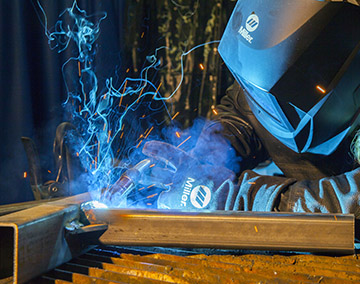
2. Do your research before you set up your equipment.
3. Make sure all of your connections are sound before getting started.
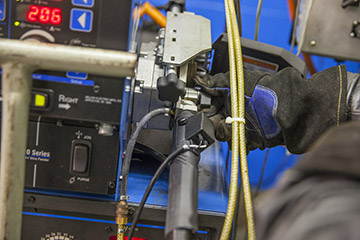
4. Select the proper drive roll and tension setting to effectively feed wire.
5. Use the correct contact tip recess for the application.
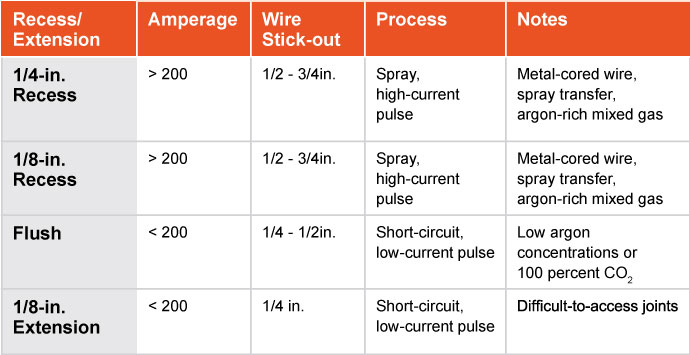
6. Use the shielding gas best suited to your wire.
7. Keep the wire directed at the leading edge of the weld pool.
Best Practices and Troubleshooting Tips to Optimize Robotic Welding
Best Practices and Troubleshooting Tips to Optimize Robotic Welding
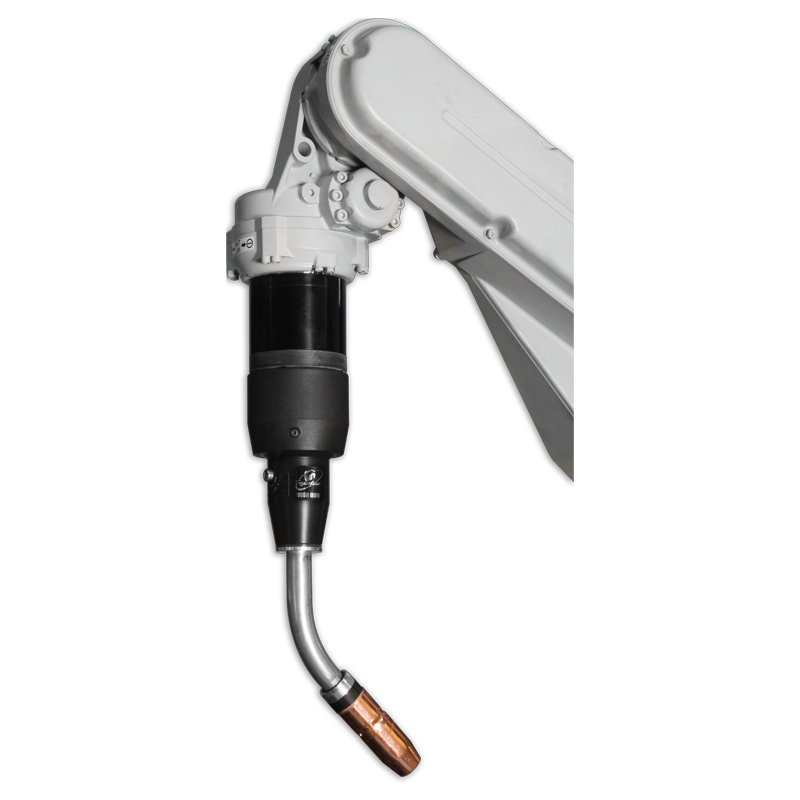
This article has been published as a web-exclusive on thefabricator.com. To read the entire article, provided by Ryan Lizotte, Tregaskiss field technical support specialist, please click here.
Robotic Welding Can Offer Benefits for Smaller Shops
Robotic Welding Can Offer Benefits for Smaller Shops
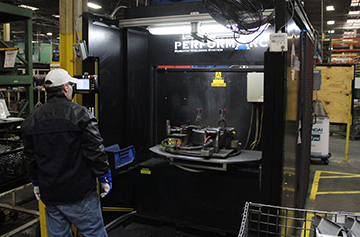
Benefits of robotic welding
Key considerations
Justifying expenses to management or ownership
Physical space and facility modifications
Part design
Part workflow
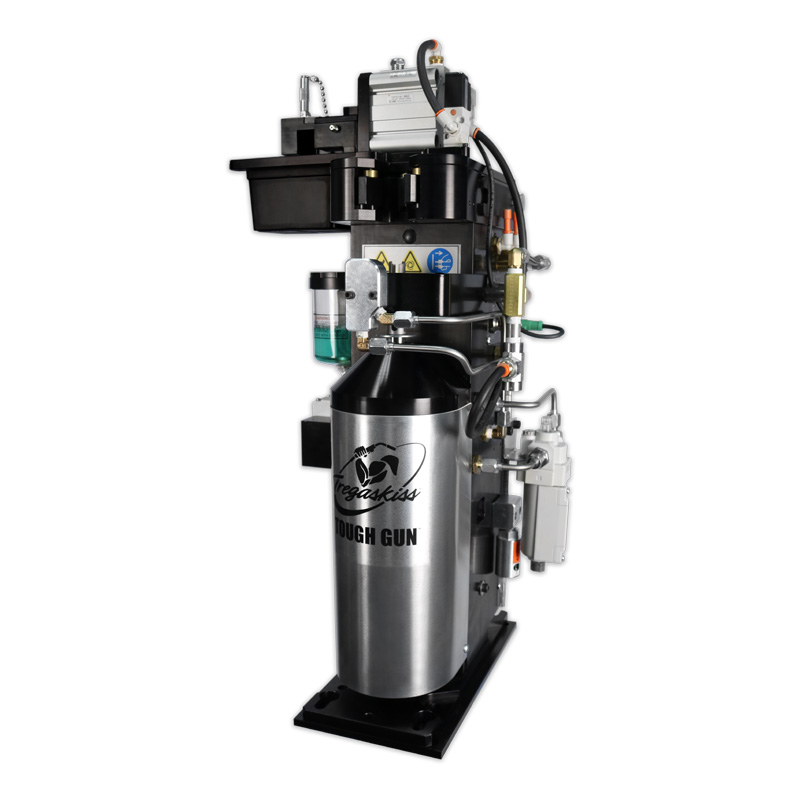
Weld cell supervision and training
Advancements can make it easier
Become more competitive with robotic welding
4 Strategies for Improving Throughput in Robotic Welding Applications
4 Strategies for Improving Throughput in Robotic Welding Applications
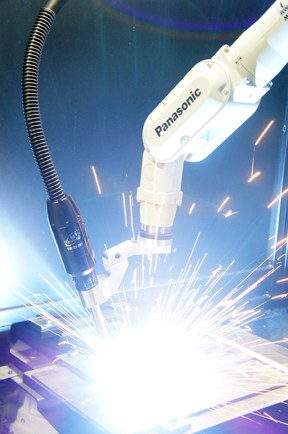
ways to increase throughput in their overall robotic welding process,
while also keeping costs low and quality on par. 1. Streamline in-house processes
2. Seek out industry experts
3. Analyze key cost drivers
4. Continue the process
5 Common Myths About Robotic Welding Systems
5 Common Myths About Robotic Welding Systems

This article has been published as a web-exclusive on thefabricator.com. To read the entire story by Tregaskiss product specialist, Vic Lubieniecki, please click here.
Top Things to Teach a Robotic Welding Supervisor
Top Things to Teach a Robotic Welding Supervisor
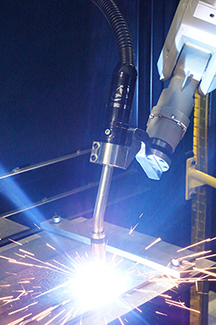
Tip No. 1: Understand the robotic welding system
Tip No. 2: Establish documentation, maintenance and control systems
Tip No. 3: Look for continuous improvements
Tip No. 4: Rely on the available resources
Making responsible decisions that lead to growth?
From Technology to Technical Support: Welding in Today’s Automotive Industry
From Technology to Technical Support: Welding in Today’s Automotive Industry
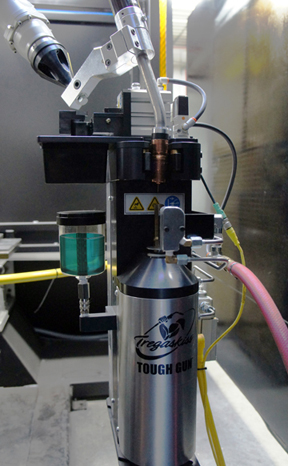
7 Ways to Save Money on Robotic Welding
7 Ways to Save Money on Robotic Welding
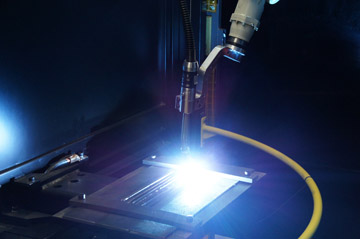
Tip No. 1: Add peripherals
Tip No. 2: Manage and maintain your consumables properly
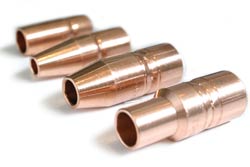
Tip No. 3: Implement a preventive maintenance program
Tip No. 4: Use the best filler metal package for the job
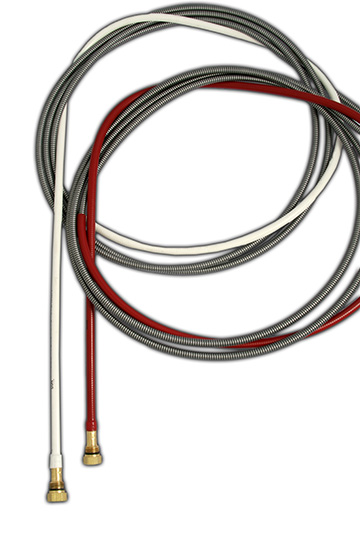
Tip No. 5: Select, trim and install the right MIG gun liner
Tip No. 6: Select the appropriate MIG gun
Having the right style and amperage MIG gun for the application can help minimize downtime for overheating and potential failure of this equipment. It can also save money by preventing the purchase of a larger (and more costly) gun than necessary for the job.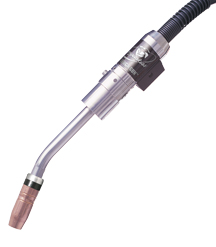
Tip No. 7: Take advantage of training opportunities
What You Should Know About Shielding Gas
What You Should Know About Shielding Gas
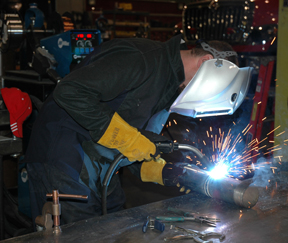
The role of shielding gases
Selecting the right shielding gas
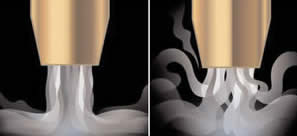
Tips for getting the most out of your shielding gas
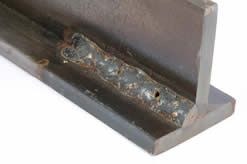
7 Things To Know About Robotic Welding Systems
7 Things To Know About Robotic Welding Systems
1. Part repeatability is critical to successful automation
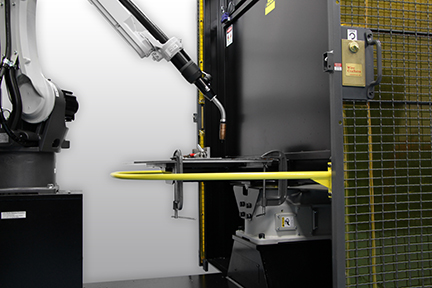
2. Training is essential
3. Additional safety equipment may be necessary
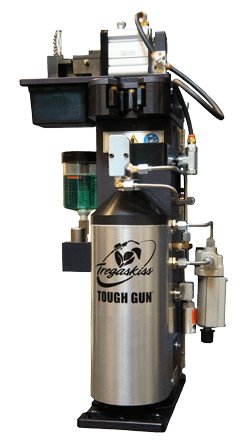
4. Weld data monitoring and/or peripherals can help improve results
Proper maintenance can help protect the investment in automation
6. Communication is key to proper weld quality and cost savings
7. Robots can do more than just weld
What You Must Know About Robotic Welding
What You Must Know About Robotic Welding
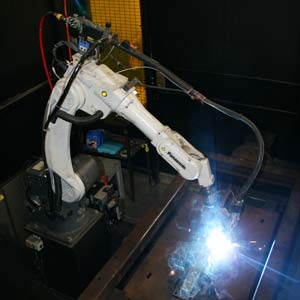
1. There’s more to the payback on a robotic welding system than just speed
2. Parts and product flow need to be consistent
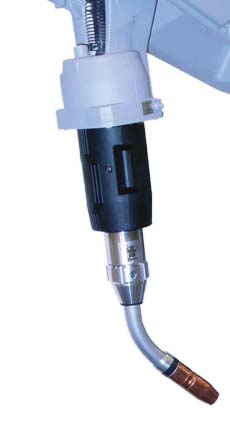
3. The MIG guns and consumables on the robot can impact productivity and profitability
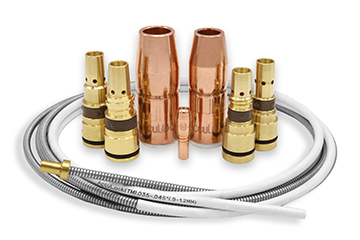
4. Peripherals can help improve the return on investment in a robotic welding operation
5. Having skilled operators with proper training to oversee the robotic weld cell is critical
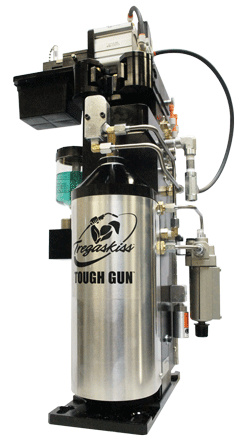
FAQs About Robotic Peripherals Answered
FAQs About Robotic Peripherals Answered
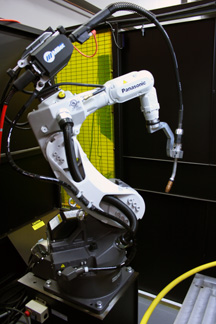
Why is a nozzle cleaning station important?
What’s the benefit of adding an anti-spatter sprayer to a nozzle cleaning station?
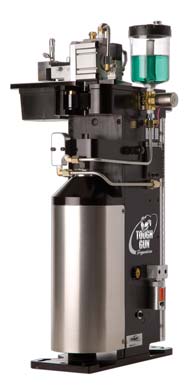
How do neck inspection fixtures work?
How can peripherals help protect against collisions?
Answers to Frequently Asked Questions About Welding Automation
From the Contact Tip to the Robot: Answers to Frequently Asked Questions About Welding Automation
What are the best applications for a robotic welding system?

Is it better to use fixed automation or a robot?
Who is the best candidate to operate a robotic welding system?
Can an air-cooled robotic MIG gun be used instead of a water-cooled gun?
What are the best consumables to use?
What is the benefit of touch sensing?

Is it necessary to add peripherals to a robotic welding system?
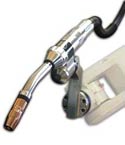
What type of payback can be expected from a robotic welding system?
A Guide to Troubleshooting Common GMAW Gun and Conusmable Problems
Don’t Let Your Gun and Consumables Get in the Way of Your Welds
A Guide to Troubleshooting Common GMAW Gun and Consumable Problems
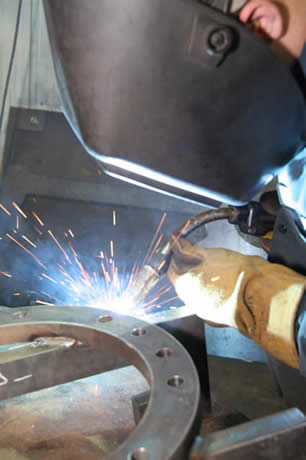
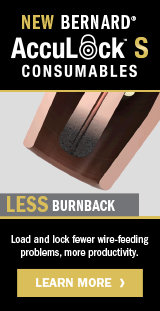

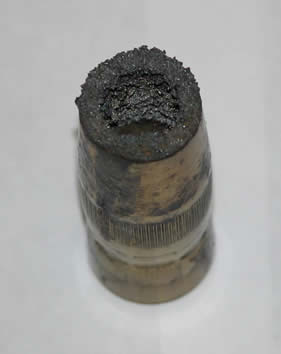

Good GMAW Welds Begin with Good, Well-Maintained Equipment
Good GMAW Welds Begin with Good, Well-Maintained Equipment
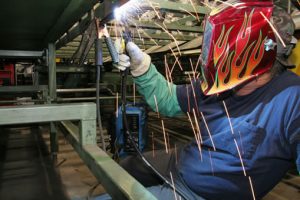
Maintaining Your Equipment
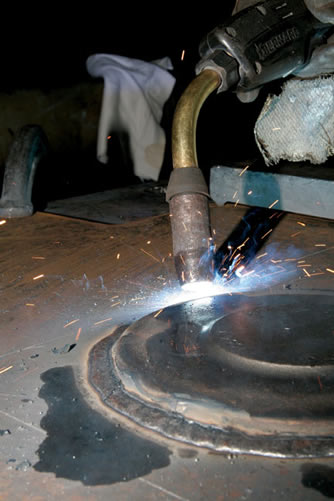
Troubleshooting
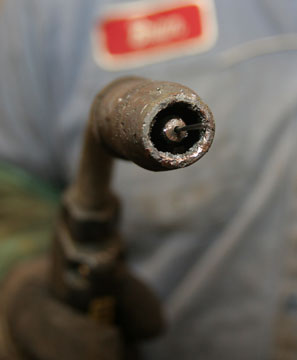
The Road to Welding Automation
The Road to Welding Automation
Why and When to Take the Journey
What’s the Benefit?
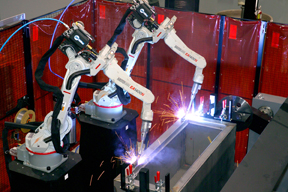
quality, increase productivity and help address the shortage of
skilled welders.Repeat That?
Robotics or Fixed Automation?
Ready to Automate?
Learn How Peripherals Can Maximize Your Robotic Welding Performance
Don’t Be Marginalized
Learn How Peripherals Can Maximize Your Robotic Welding Performance
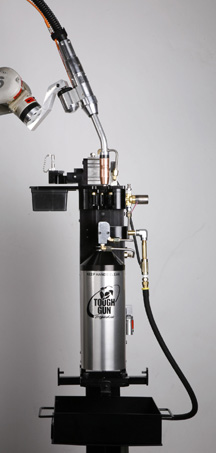
the life of the robotic MIG gun and its
consumables, and save companies
money for extra parts.Get a Grip
Making the Cut
Most wire cutters are designed to cut a range of different types of welding wire, including stainless steel, flux-cored and metal-cored, usually up to 1/16-inch diameter. They can often be mounted on a nozzle station (to be discussed later) or remotely located to be used as needed.Inspected and Ready to Weld
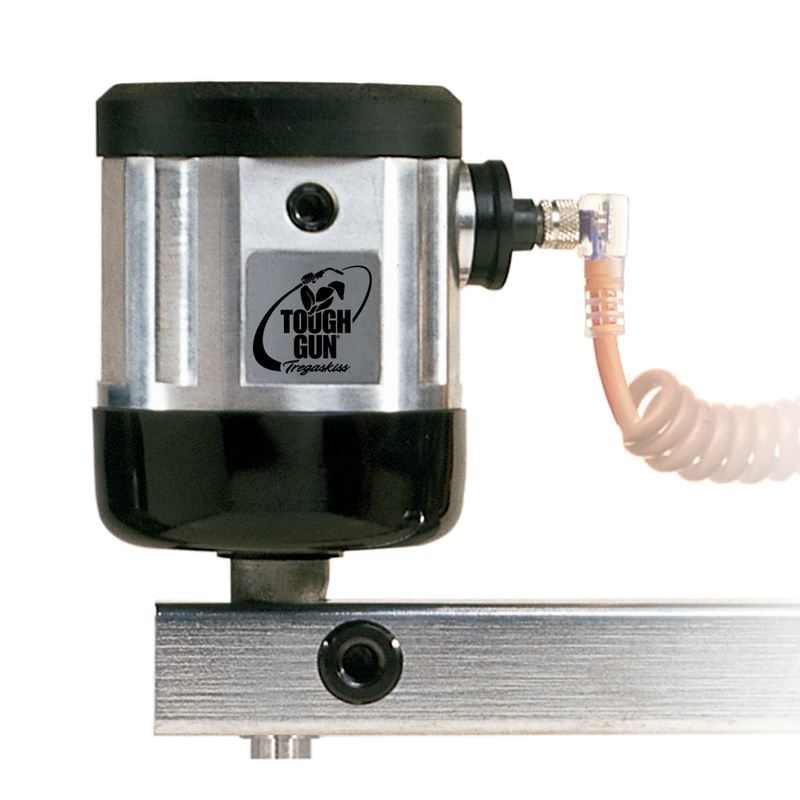
of an impact by signaling to the robot
to stop weldingCleaned, Sprayed and Spatter-Free
No Peripheral Decision
Is Automation Right for Your Operation
Is Automation Right for Your Operation?
Considerations to Make Before Investing
Automation Advantages
Parts Should Be Easy to Weld
Justify Automated Solutions with High Part Volume
Evaluating the Facility
of raw materials are greater than that of semi-automatic welding processes. Although welding automation can consume large portions of plant real estate, small facilities still can make automation work by purchasing fewer pieces of automation equipment that are programmed to perform multiple tasks. They can facilitate this solution by outfitting robots with various toolsets that enable them to work on diverse jobs while occupying a smaller footprint.Supervision of the Automated Cell
Prior Planning Prevents Poor Performance
Additional Information: Fixed Automation Versus Fully Automated
5 Tips for Improving Robotic Welding
5 Tips for Improving Robotic Welding
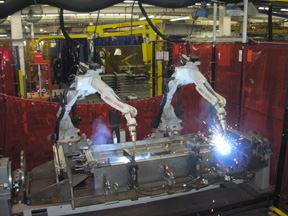
1. Select the Right Wire
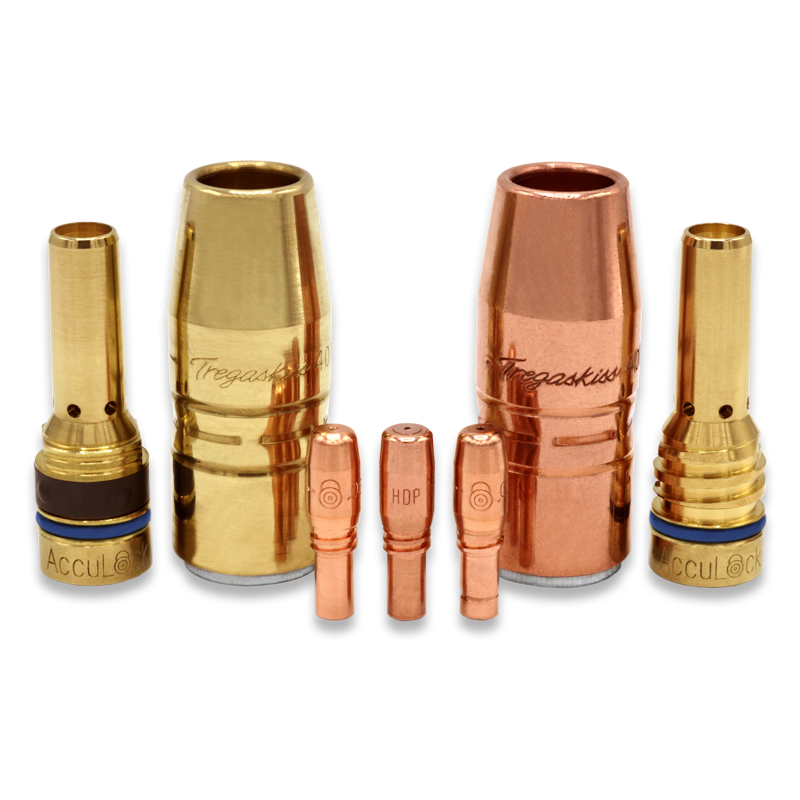
2. Choose the Right Consumables
3. Consider a Front-Load Liner
4. Select the Right Filler Metal Package
5. Select the Right MIG Gun
Additional Resources
Automated Intelligence: Deciding Whether Automation is Right For You
Automated Intelligence:
Deciding Whether Automation is Right For You
1. Why Automate?
2. Payback
3. Whether to Automate
4. Your Automation Options
5. Automation Componentry
6. Planning for the Future
7. Throughout the Journey
Final Thoughts
Troubleshooting Robotic Welding
From Consumables to Cables:
Troubleshooting Robotic Welding

system, it is critical to identify the problem
as quickly and accurately as possible. Look
first at the variables that have most recently
changed, as these may be the culprits.Poor Consumable Performance and/or Premature Failure

Premature Cable Failure
Poor Wire Feeding

help extend consumable life. Should any
problems occur with the equipment,
check that the reamer is positioned
accurately and is applying the correct
mount of anti-spatter solution.Poorly Performing Peripherals
Trouble with TCP
Welding operators, however, shouldn’t assume that welds that are off-location are always caused by an incorrect TCP. In some cases, they can be the result of improper fixturing, fixturing that allows the part to move or a loose robot base. Or there may be a variation in the part itself.Final Considerations
Should You Automate?
Should You Automate Your Welding Operation?
Considerations for Making the Decision
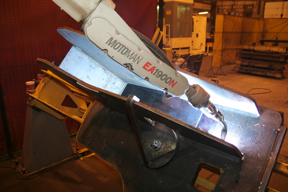
with a competitive advantage by providing better weld quality
and greater productivity compared to a semi-automatic
welding process.The Benefits of Automated Welding
The Best Applications for Automated Welding
Process Flow is Important
Quality Matters
Shift in Skill Set
The Next Step


